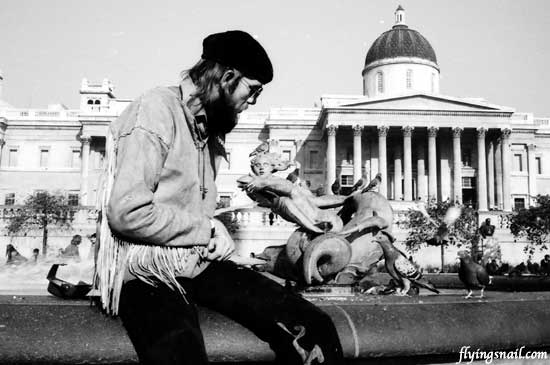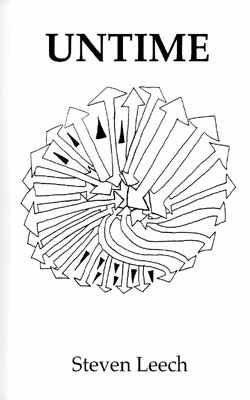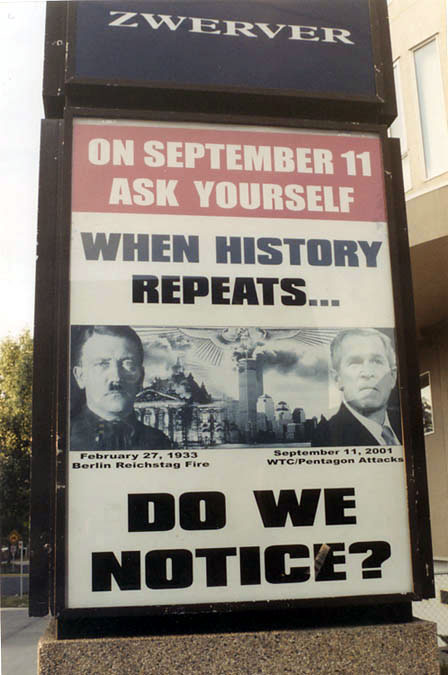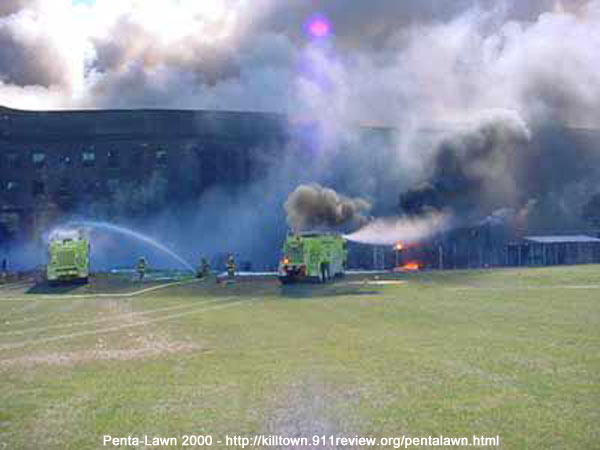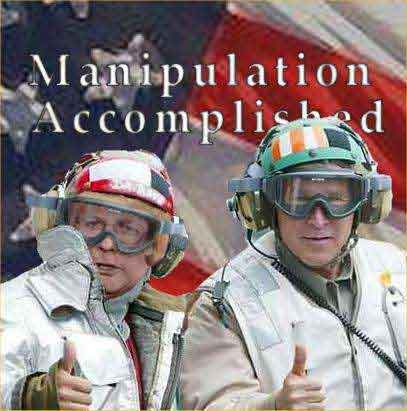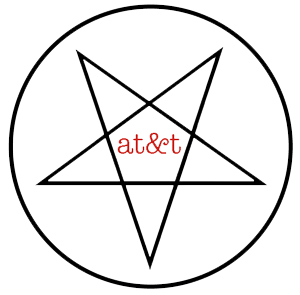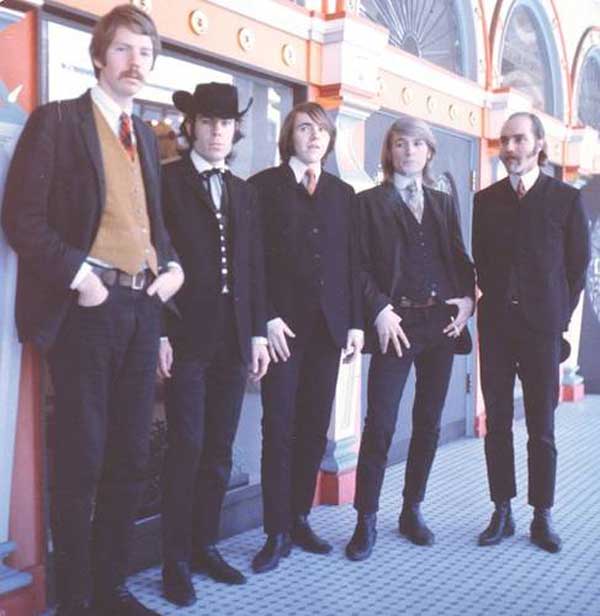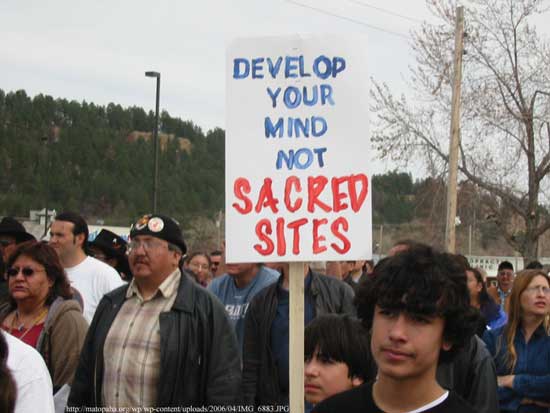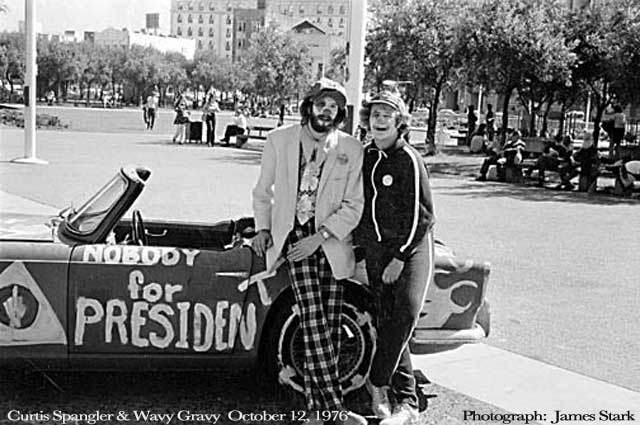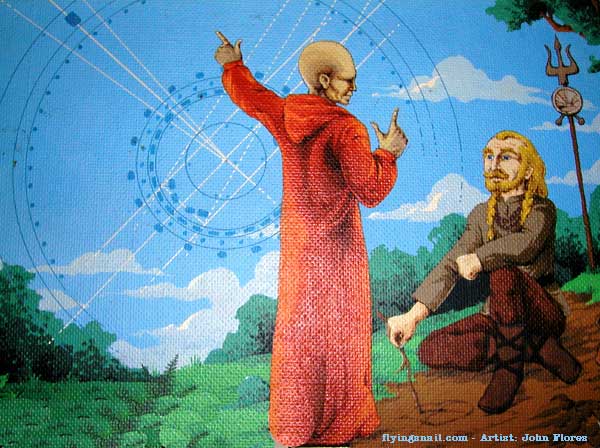
Il est dangereux d’avoir raison dans des
choses où des hommes accrédités ont tort
The Rolling Stones | Doom and Gloom via Trunk Animation
How an Army of Deadheads
(And Their LSD) Invented Silicon Valley
Grateful Dead, Morning Dew, from Mark Messina ~ https://vimeo.com/8983472
by JESSE JARNOW, 04.16.16, 6:00 AM ~ wired
http://www.wired.com/2016/04/heads-jesse-jarnow-excerpt/
Daniel Kottke (left) and Steve Jobs (right) at the Atlantic City
Personal Computing Festival in August, 1976 ~ COURTESY OF DANIEL KOTTKEDANIEL KOTTKE IS a regular among familiar eucalyptus groves outside Stanford University’s Frost Amphitheater, seeing the Dead there whenever he gets the chance. Into the ’80s, the venue remains a picnic ground for Stanford research scientists and Silicon Valley characters old and new, conspiring on various levels of future building.
A computer industry veteran himself, at one show in the late ’80s, Daniel Kottke runs into an old friend who is visiting Deadland with a new lady. Daniel and his friend have been on the outs for years. The band is playing and they don’t have much time to talk, but their interaction is cordial.
Spontaneously, Daniel offers his old friend a few hits of Windowpane he has in his pocket. “An old-times gesture,” Daniel says. They used to do a lot of acid together in the meditation room they built in the attic of their college home. They’d hung out at a commune and picked apples. They’d gone to India together, started a company together. They were bros, at least until Steve freaked out and/or went straight and/or met his psychedelic destiny as the creator of user-friendly personal computers. Apple founder Steve Jobs accepts the acid from Daniel Kottke, and they go their separate ways.
Later, Daniel hears that Jobs tells his girlfriend, “Oh, I can’t take this, it’s probably poison.”
“I just feel bad for Steve if that’s what he thought,” says Kottke, the first of Apple’s many Deadhead employees. (Though, to be fair to the late Steve Jobs, sometimes if one doesn’t want to commit to a half-dozen hours in the Beyond, the first excuse is sometimes the snarkiest.)
The Grateful Dead performing at Stanford’s Frost Theater on October 9, 1982
via CLAYTON CALL/GETTY IMAGESEven without Steve Jobs tripping at the Frost, the linkage between the rainbow underground and the burgeoning computer culture grows more robust and high-speed by the day. Kottke remains active on the circuit of Deadhead cybergeeks going strong since (and still including) the SAILers and MIT Media Labbers of a decade ago.
The Internet is a far-off unsettled place in the ’80s, more a collection of various text-based technologies that don’t add up to much in most places. But, yet, here are these Deadheads, new kinds of citizens.
Take, for example, Gumby. Gumby is an appropriately heady figure among the early Deadhead digerati. “He basically bounced between MIT and the AI lab at Stanford,” remembers dead.dis@sail mailing list founder Paul Martin. “He was just a good hacker who hadn’t actually had any training in any of the AI stuff, but would really work hard at swinging code and making something work.”
Gumby is connected and on the go, reaching for a new form of digital harmony. “Gumby was the kind of person who was back and forth, you couldn’t just call him on the phone,” Paul Martin says. “You just had no idea where he was going to be that week, and email was a way around that problem.” Once, when working in Austin in the mid-1980s, Gumby departs for Dead tour, the whole tour.
In each city, Gumby connects with a head at a local computer lab. Never a partier, Gumby’s postshow routine involves going immediately to a terminal and posting a set list. The tour happens to end in Austin, where he’s living at the time, and he happens to go into work that day, where he encounters his boss.
“We haven’t seen you much,” the boss man says. “Well, I’ve been thinking,” he half bluffs.
“Thinking about what?” and Gumby spells it out on the whiteboard. Without really working at it, he’d untangled the whole problem in his head over the previous weeks, following the Dead, listening to the Dead, breathing the Dead. The Dead’s long jams, either experienced live or on tape, are good for thinking, Garcia’s solos unfolding with crystal themes and unexpected variations.
“There was a culture of people that believed in sharing,” Gumby says of the computing world he finds himself helping to define in the mid-1980s. “It’s always been around. It’s just the people doing the cool stuff. It’s how the network happened. We all passed patches around, different ideas. There weren’t clear boundaries in my life between being a Deadhead, going to shows, working on computers. We’d arrange consulting jobs around the tour.”
Paul Martin, founder of early Deadhead e-mail list dead.dis@SAIL, at the Stanford
Artificial Intelligence Lab, 1974 ~ via DAVID WILKINS/COURTESY OF JESSE JARNOWThere is something new afoot in the computer industry, the deep merging of the New Age and the new economics. Observed David Byrne, via actor Spalding Grey, in 1986’s True Stories, “They don’t work for money anymore, or to earn a place in heaven, which was a big motivating factor once upon a time, believe you me. They’re working and inventing because they like it. Economics has become a spiritual thing. I must admit it frightens me a little bit. They don’t see the difference between working and not working. It’s all become a part of one’s life … there’s no concept of weekends anymore!”
That’s not all. In 1989, D.V. (Gumby) Henkel-Wallace, as his email reply-to sometimes reads, cofounds a new Palo Alto venture: Cygnus Solutions. It is the world’s first free software company, building on the shareware/freeware concepts that have been circulating for some time. Free. Free! Free, free, free! It’s built on GNU, the world’s first free operating system. John Gilmore, another founding Cygnus partner, is an equally libertarian Silicon Valley Dead freak and employee number five at Sun Microsystems. [Note: I actually delivered the first printouts of /rec/music/gdead to the Grateful Dead office [ask Jeani], was once John Gilmore's partner, disagree with this depiction of John, and anyone desiring the real story, please get in touch with me ~@~] He comes with his own legendary maxims: “The Net interprets censorship as damage and routes around it.” It’s not that trading Dead tapes (or eating acid) inspired Cygnus, but the shared idea of FREE birthed from the American alchemical ooze.
At first, it merely seems like they’ve collectively hit rainbow oil. The Merry Prankster and Whole Earth founder Stewart Brand is one of the first to notice. He quietly establishes the Global Business Network (not as catchy as “Whole Earth”) and, over the next years, stages learning conferences at the Esalen Institute in Big Sur and Biosphere 2 out in the Arizona desert. Every month, subscribers receive books handpicked by Brand. It feels much like Whole Earth endeavors of the past, but this venture is underwritten by Shell, AT&T, and Volvo, with clients like Xerox, IBM, Bellsouth, Arco, Texaco, and—by the Clinton years—the Joint Chiefs of Staff and the Defense Department. Its subscription fee is much higher than the Whole Earth Quarterly.
Something is being built, a massive modern work, both intellectual and physical, and many people have many different kinds of stakes in it. No one is quite sure what it looks like, but there’s no question that the San Francisco Peninsula is once again the locus. “There were Deadheads everywhere,” says Gumby of Silicon Valley in the late 1980s.
Jerry Garcia alongside guest performer John Cipollina with the Grateful Dead at the
Greek Theater in Berkeley in May, 1983 ~ via ED PERLSTEIN/GETTY IMAGES“Megatest was full of Deadheads,” he says. “They made semiconductor equipment. Lots of pot was smoked. There were tons of Deadheads there all through the organization. You’d see the guys from Cisco and Apple and Sun and Stanford at Frost [Amphitheater] and the Greek [Theatre], just around, at shows.” And, built into the Grateful Dead’s psychedelic two-set, street-to-space framework is another handy feature: a set break, perfect for a good schmooze.
At a show at the Greek Theatre in Berkeley, early Apple employee Daniel Kottke is summoned backstage. “Barlow wants to see you,” someone tells him and hands him a laminate to go see the Grateful Dead lyricist.
“I was thrilled, I had no idea why,” Kottke says. “So I got backstage, first time ever for me, and I was a little starstruck. I didn’t even know what Barlow looked like. But I found him, and he wanted to thank me.”
David Wilkins and Paul Martin of the Stanford Artificial Intelligence Lab following
the Grateful Dead, 1974 ~ COURTESY OF DAVID WILKINS/JESSE JARNOWRecently, Kottke had been the recipient of a massive file of Grateful Dead lyrics, a descendent of the original lyric collection created by Stanford’s Dave Wilkins and Paul Martin back in 1973, passed from server to server until Kottke had split them into 120 searchable Microsoft Word documents on three Macintosh floppy discs that somehow made it to John Perry Barlow. It is the first time Barlow has ever held a complete compendium of his own work.
One part of that transaction’s magic is the achievement of sharing useful content through the network. But another even more astonishing fact is the resilience of the data, that it held from machine to machine with some kind of life force of its own. Something inside of it made it self-replicating and alive, something begging to be copied and shared and listened to and sung.
Barlow and Kottke become pals, one more bit of Deadhead networking, at which Barlow is as adept as anyone. Established as a user on the WELL, the San Francisco dial-up message board, John Perry Barlow jumps full force into the new digital universe and uncorks a public personality previously unseen anywhere in the network, either offline or online. Eloquent and funny, Barlow emerges as a star on the WELL amid a community of tech journalists, science fiction writers, programmers, and Deadheads, the social and economic glue of the entire system.
There are regular WELL gatherings at the network’s home office in Sausalito next to the houseboats that bob in the pleasant Marin weather. It is networking par excellence, the rich community of WELL beings. But John Perry Barlow keeps climbing.
Jesse Jarnow (@bourgwick) is a writer and DJ on WFMU. His writing appears in Pitchfork, WIRED, and elsewhere. He posts about psychedelic news and history via Twitter and on Facebook. This is an excerpt from his new book, Heads: A Biography of Psychedelic America (Da Capo Press).
The Grateful Dead Once Dosed The Crew
Of ‘Playboy After Dark’ With LSD ~ Source
Grateful Dead on “Playboy After Dark” * 1969 via moontrollTIL when the Grateful Dead played "Playboy After Dark" in 1969, the band's LSD supplier 'Bear' dosed the coffee urn that everyone on set was drinking from, including Hugh Hefner. Hefner later wrote a letter to Jerry Garcia thanking the band for the enjoyable experience. via reddit.
Hackers ~ Missing BBS Files 1970s
Curtis Spangler, the CommuniTree's First Fairwitness
Click to visit: The San Francisco CommuniTree ~or~ BBS Index SourceLet's look at some of the earliest electronic virtual communities. This kinship chart shows the origins of the first computer bulletin boards (BBSs) that supported social interaction. Prior to this moment, BBSs messages were organized by alphabetical order, or by date. BBSs were metaphors for physical bulletin boards... objects for the exchange of simple messages, not conversations. Now, in 1978 a group of people in Northern California designed a BBS that used message attachment protocols that facilitated conversations. As a metaphor for this structure they used a tree, firstly because it was based on a principle of computer science called binary tree protocol, and secondly because Northern California near Silicon Valley was a land of hot tubs, Eastern mysticism, and computer hackers, and the organicity that the word "tree" suggested was important to those hackers' worldview.
The story of the life and death of the first CommuniTree tells us how and why the later virtual community systems were designed. The original CommuniTree was designed with the idea that the community it facilitated would be completely free. Anyone could enter any sort of message. In fact, censorship was completely prohibited at the level of the code, of the Tree's program. It worked this way: First, the system operator was prevented from reading messages as they arrived. Second, messages were hard to remove once they were entered. Third, anything could be entered into the system, including so-called control characters, which are not part of the standard alphanumeric set and which can be used to control the operation of the host computer. Lastly, to make sure that no system operator could tamper with the system, the code was written in language called Forth, and not documented. Now Forth is a religion unto itself, and if you know anything about Forth you recognize that this makes the system a total black box -- it's impossible to know anything about how the code works.
CommuniTree went online in 1978. The kinds of conversations they had in there were of a high intellectual and spiritual character. They talked about new philosophies and new religions for post-Enlightenment humanity, the first time such conversations had taken place online.
Now, at the same moment Apple Computer had reached an agreement with the U. S. Government that in return for a tax break, Apple put computers into primary and secondary schools in the U.S., and some of those computers had modems. This meant that quite suddenly a lot of kids could get online. At first both boys and girls had access, but the boys quickly elbowed the girls out of the way -- high tech was men's work. The boys quickly found out CommuniTree's phone number and logged on. They were clearly unimpressed with the high intellectual level of the discourse on CommuniTree, and they expressed their dissatisfaction in ways that were appropriate to their age and linguistic abilities. Now, the hardware of the Tree was the best that Apple had to offer in 1978, it had two floppy disk drives with a combined total of 300 kilobytes of storage. At the time, the folks who designed the Tree said "300K -- we can go on forever. We'll never fill this up." A common BBS today would have at least 100 megabytes of storage, many orders of magnitude greater than the Tree. So it didn't take long for the kids to fill every byte of disk space with every word they could think of that meant shitting or fucking, and then they'd add control characters on top of that, characters that could mess with the program or stop the floppy drives. The sysops couldn't see the messages arriving and couldn't remove them afterward. The Tree was doomed.
One of the participants in the Tree discourse said "Well, the barbarian hordes mowed us down." And the people who were on the Tree ran away, just like the population of a village during a sack. It was a kind of scattering of the tribes. Some of those people went off and designed BBSs of their own that had built into them the elements of control and surveillance that appeared to be necessary to ensure the BBS's survival in a real world that included roaming barbarians. That kind of surveillance and control continues to the present day, built right into the software; we don't think about it much any more.
And that's how, back at the beginning of virtual time, the first virtual community left the Magic Garden, and entered the "real" virtual world in which good had to find ways to coexist with evil.
Ken Thompson, Dennis Ritchie and Brian Kernighan
admit Unix is an elaborate prankIn an announcement that has stunned the computer industry, Ken Thompson, Dennis Ritchie and Brian Kernighan admitted that the Unix operating system and C programming language created by them is an elaborate prank kept alive for over
2040 years. Speaking at the recent UnixWorld Software Development Forum, Thompson revealed the following:"In 1969, AT&T had just terminated their work with the GE/Honeywell/AT&T Multics project. Brian and I had started work with an early release of Pascal from Professor Niklaus Wirth's ETH labs in Switzerland and we were impressed with its elegant simplicity and power. Dennis had just finished reading 'Bored of the Rings', a National Lampoon parody of the Tolkien's 'Lord of the Rings' trilogy. As a lark, we decided to do parodies of the Multics environment and Pascal. Dennis and I were responsible for the operating environment. We looked at Multics and designed the new OS to be as complex and cryptic as possible to maximize casual users' frustration levels, calling it Unix as a parody of Multics, as well as other more risque allusions. We sold the terse command language to novitiates by telling them that it saved them typing.
Then Dennis and Brian worked on a warped version of Pascal, called 'A'. 'A' looked a lot like Pascal, but elevated the notion of the direct memory address (which Wirth had banished) to the central concept of the language. This was Dennis's contribution, and he in fact coined the term"pointer" as an innocuous sounding name for a truly malevolent construct.
Brian must be credited with the idea of having absolutely no standard I/O specification: this ensured that at least 50% of the typical commercial program would have to be re-coded when changing hardware platforms. Brian was also responsible for pitching this lack of I/O as a feature: it allowed us to describe the language as "truly portable".
When we found others were actually creating real programs with A, we removed compulsory type-checking on function arguments. Later, we added a notion we called "casting": this allowed the programmer to treat an integer as though it were a 50kb user-defined structure. When we found that some programmers were simply not using pointers, we eliminated the ability to pass structures to functions, enforcing their use in even the Simplest applications. We sold this, and many other features, as enhancements to the efficiency of the language. In this way, our prank evolved into B, BCPL, and finally C. We stopped when we got a clean compile on the following syntax:
for (;P("\n"),R-;P("|"))for(e=3DC;e-;P("_"+(*u++/8)%2))P("|"+(*u/4)%2);
At one time, we joked about selling this to the Soviets to set their computer science progress back 20 or more years.
Unfortunately, AT&T and other US corporations actually began using Unix and C. We decided we'd better keep mum, assuming it was just a passing phase. In fact, it's taken US companies over 20 years to develop enough expertise to generate useful applications using this 1960's technological parody. We are impressed with the tenacity of the general Unix and C programmer. In fact, Brian, Dennis and I have never ourselves attempted to write a commercial application in this environment.
We feel really guilty about the chaos, confusion and truly awesome programming projects that have resulted from our silly prank so long ago."
Dennis Ritchie said: "What really tore it (just when ADA was catching on), was that Bjarne Stroustrup caught onto our joke. He extended it to further parody, Smalltalk. Like us, he was caught by surprise when Nobody laughed. So he added multiple inheritance, virtual base classes, and later ... templates. All to no avail. So we now have compilers that can compile 100,000 lines per second, but need to process header files for 25 minutes before they get to the meat of "Hello, World".
Major Unix and C vendors and customers, including AT&T, Microsoft, Hewlett-Packard, GTE, NCR, and DEC have refused comment at this time. Borland International, a leading vendor of object-oriented tools, including the popular Turbo Pascal and Borland C++, stated they had suspected this for a couple of years. In fact, the notoriously late Quattro Pro for Windows was originally written in C++. Philippe Kahn said: "After two and a half years programming, and massive programmer burn-outs, we re-coded the whole thing in Turbo Pascal in three months. I think it's fair to say that Turbo Pascal saved our bacon". Another Borland spokesman said that they would continue to enhance their Pascal products and halt further efforts to develop C/C++.
Professor Wirth of the ETH institute and father of the Pascal, Modula 2 and Oberon structured languages, cryptically said "P.T. Barnum was right." He had no further comments.
I pledge allegance to millionaires & billionaires of America and the
wealth for which they stand...
Sprung ~ For the Harley-Davidson® Springer® Enthusiast
Chinati Mountains via Joseph Savant
ARE YOU EXPERIENCED via Sylvain Breault
How? via Ernie Fritz
Karl Cohen ~ Association International du Film d'Animation SF Newsletter
ASIFA-SF September 2017 Newsletter
ASIFA-SF October 2017 Newsletter.pdf
Steven Leech ~ Boptime + Legends of Wilmington Jazz
On Saturday’s Boptime we welcome the autumn season at 6am (EDT) with American composer Ferde Grofé’s Grand Canyon Suite and round out the hour with some popular songs dedicated to the season. At 7am (EDT) we turn to this day in 1955 with a slew of new songs along with some of the summer hits of that year that were still popular but beginning to fade a bit. Included will be the #1 hits for the day, the popular movies locally on the day that actor James Dean died tragically in an automobile accident. At 8am (EDT) it’s Rockabilly Ridge with cohost Michael Ace, followed at 9am (EDT) by Beatlemania from 1963, when the Beatles had hardly made a dent on the American music scene. We’ll play a sample of hit tunes on the British charts, then a selection from the Delaware Rock & Roll Hall of Fame, the #1 songs, what was playing in the movies and what was on local television.. ~ Steve
Boptime: Saturday, 6 AM Eastern, 3 AM Pacific
Go To: http://www.wvud.org/?page_id=24
Click on a listening link below the WVUD logo:
Keep the Net Neutral
THIS IS TEAM CABLE ~ https://www.battleforthenet.comThe battle for the future
of the Internet ends soon.Comcast, Verizon and AT&T want to end net neutrality so they can control what we see & do online. First, they want to gut FCC rules. Then, they plan to pass bad legislation that allows extra fees, throttling & censorship. Time is running out to stop them. Write Congress & the FCC now!
What is net neutrality?
Net neutrality is the principle that Internet providers like Comcast & Verizon should not control what we see and do online. In 2015, startups, Internet freedom groups, and 3.7 million commenters won strong net neutrality rules from the US Federal Communication Commission (FCC). The rules prohibit Internet providers from blocking, throttling, and paid prioritization—"fast lanes" for sites that pay, and slow lanes for everyone else.
We are Team Internet. We support
net neutrality, freedom of speech.Nearly everyone who understands and depends on the Internet supports net neutrality, whether they're startup founders, activists, gamers, politicians, investors, comedians, YouTube stars, or typical Internet users who just want their Internet to work as advertised—regardless of their political party. But don't take our word for it. Ask around, or watch some of these videos. ~ https://www.battleforthenet.com
FCC Sued For Ignoring FOIA Request
Investigating Fraudulent Net Neutrality Commentsfrom the ignore-a-problem-and-it-goes-away,-right? dept
by Karl Bode ~ Legal Issues ~ Thu, Sep 21st 2017 3:30am
Filed Under: fcc, foia, net neutrality, transparency ~ PermalinkFor months now we've noted how somebody is intentionally filling the FCC's net neutrality comment proceeding with bot-generated bogus comments supporting the agency's plan to kill net neutrality protections. Despite these fake comments being easily identifiable, the FCC has made it abundantly clear it intends to do absolutely nothing about it. Similarly, the FCC has told me it refuses to do anything about the fact that someone is using my name to file comments like this one falsely claiming I support killing net neutrality rules (you may have noticed I don't).
While nobody has identified who is polluting the FCC comment system with fake support, it should be fairly obvious who this effort benefits. By undermining the legitimacy of the public FCC comment proceeding (the one opportunity for transparent, public dialogue on this subject), it's easier for ISPs and the FCC to downplay the massive public opposition to killing popular net neutrality rules. After all, most analysis has shown that once you remove form, bot and other automated comments from the proceeding, the vast, vast majority of consumers oppose what the FCC and Trump administration are up to.
Attempts to dig deeper into this mystery haven't gone well. Freelance writer Jason Prechtel filed a Freedom of Information Act (FOIA) request on June 4 asking the FCC for data on the bogus comments, the API keys used, and how the FCC has worked to address the problem. But while the FCC acknowledged the FOIA request, it wound up giving Prechtel the runaround throughout the summer -- stating on June 14 that it would be extending the deadline for responding to his request from July 3 to July 18 -- before ultimately deciding to ignore his request altogether.
As a result, Prechtel has filed a lawsuit against the FCC (pdf), stating the agency is breaking the law by sitting on its hands. From a Medium post written by Prechtel explaining the suit:
"As the agency is legally obliged to respond to my request, and as the underlying questions behind my request still haven’t been answered, I have filed a lawsuit against the FCC for their refusal to conduct a reasonably timely search for the records, and have demanded the release of these records. Even now, over three months after my FOIA request, and even after I’ve filed a lawsuit, this request is still listed as “under agency review".
If you're playing along at home, this is just one of several lawsuits that have been filed against the agency for its Keystone Cops-esque handling of the network neutrality proceeding to date. The FCC has been sued for obfuscating details on its meetings with major ISPs in regards to net neutrality, and also faces a lawsuit over the agency's apparently completely fabricated DDoS attack it claimed occurred conveniently at the exact same time John Oliver told his viewers to file comments with the agency. Perhaps the more observant will notice a trend at Ajit Pai's FCC?
Again, nobody knows who's behind this effort to pollute the public discourse, and the FCC is making it pretty clear it doesn't want to make it any easier to find out. Having covered the sector for twenty years, this sort of thing is well within the behavioral norms of the wide variety of "non profit," "non-partisan" groups hired by ISPs to pee in the discourse pool. Whoever's to blame, it's pretty clear the FCC is playing a role in not only making it harder to understand what happened, but in undermining the value of the public comment period.
As the FCC moves to formally vote to kill the rules in a month or two, expect Ajit Pai and friends to increasingly use the dysfunction they helped cement to downplay legitimate public opposition to its plan. After that, you can expect all of this dysfunction to play a starring role in the multiple, inevitable lawsuits that will be filed against the agency in the wake of the vote. Again, how was this blistering shitshow a better idea than simply listening to the will of the public and leaving the existing, popular net neutrality rules alone? [Click to view document]
Comcast, AT&T Are Paying
Minority Groups To Support Killing Net Neutralityfrom the sock-puppetry dept
by Karl Bode Wed, Feb 15th 2017 6:27am Permalink
Filed Under: astroturf, fcc, minority groups, net neutrality
Companies: asian americans advancing justice, naacp, national urban leagueFor years, we've noted how one of the greasier lobbying tactics in telecom is the use of minority groups to provide the illusion of broad support for what's often awful policy. Such groups are given cash for a shiny new event center in exchange for parroting any policy position that comes across their desks, even if it dramatically undermines their constituents. As a result, we've shown how time and time again you'll see minority coalitions like the "Hispanic Technology & Telecommunications Partnership" supporting awful mergers or opposing consumer-centric policies like more cable box competition or net neutrality.
And it's not just minority groups. A wide variety of groups take telecom cash to repeat whatever they're told, whether it's rural Texas school associations, the U.S. Cattlemen's Association or even "balloonists." Some of these groups are created specifically for this purpose. Other times, these groups are "co-opted" without understanding what they're actually supporting. The goal overall is simple: to create the illusion of broad support for bad ideas the actual public -- minority or otherwise -- would oppose.
With the debate over net neutrality heating up once again, ISPs have again dusted off this tried and true tactic to mislead the press, public, and politicians. As a result, we're seeing numerous civil rights groups that are more than happy to let giant corporations like AT&T and Comcast rent their identity for the weekend. This week, a coalition of such groups, including the NAACP, Asian Americans Advancing Justice, and the National Urban League, fired off a letter urging Senators to move quickly to craft "a permanent statutory solution" to "solve" net neutrality once and for all:
The issue of network neutrality and the importance of a free and open internet has been a political football. Every time the political pendulum swings, this policy debate becomes difficult, convoluted, and even condescending. One thing is crystal clear: The internet should be open and accessible.
For this reason, we support a permanent statutory solution that enshrines the basic open internet principles into law. These core principles are not controversial and should not be subject to endless litigation, regulation, and reconsideration. A statute locking in net neutrality would protect net neutrality no matter how the political winds blow.
A statutory approach also avoids the jurisdictional and classification problems that plagued the last FCC. The goal should be improvement, deployment, and adoption of the high speed networks that all Americans deserve. Legislation will provide certainty to consumers and industry for the foreseeable future.
On the surface this sounds perfectly reasonable. Until you understand what's actually happening in telecom policy and the fight for net neutrality right now.
While there's no debate that a Congress-made net neutrality law would be the ideal solution, you may have noticed that Congress is so awash in telecom campaign contributions that crafting a law not riddled with fatal loopholes has been impossible. As a result, the best path forward for those that actually care about net neutrality is to leave the existing rules and the FCC's Title II authority in place (which is what these groups should be advocating for).
But, since that's not what ISPs want, they're pushing Congress -- and their armies of dollar-per-holler policy tendrils -- to push for a new law, one that will claim to "solve" net neutrality but will actually work to kill it through "compromise."
The FCC technically could walk back net neutrality via the rulemaking process, but it would require another public open comment period. And since the 4 million comments made the last go-round broke FCC records, ISPs aren't keen on revisiting this strategy. So the strategy is this: craft a new Communications Act rewrite or other law professing to codify net neutrality into law, but bury it with so many loopholes as to make it net neutrality protection in name only. When net neutrality supporting Senators in Congress fail to come to the table, they'll be derided as being unwilling to compromise for the good of the people.
But it's not really a compromise when the end product is worse than doing nothing (read: leaving the popular rules alone).
Once you understand all of that, it becomes clearer how the broadband industry is using these groups to create bogus support for a new, much weaker net neutrality law to "avoid the jurisdictional and classification problems that plagued the last FCC." And if you follow the money behind this week's letter, you'll find that the group that coordinated it has a long, proud history of taking money from telecom companies, in exchange for coordinating civil rights group support for everything from the the latest megamerger to the assault on net neutrality:
Telecom issues, however, are a particular specialty. Last week’s letter was organized by the Multicultural Media, Telecom & Internet Council (MMTC), a group funded by the telecom industry that has previously encouraged civil rights groups to oppose net neutrality. MMTC in previous years reported receiving about a third of its budget from industry-sponsored events; its annual summit, which was held last week, was made possible by $100,000 sponsorships from Comcast and AT&T, as well as a $75,000 sponsorships from Charter Communications and Verizon.
This tactic has been so successful for Comcast, the company actually renamed their top lobbyist, David Cohen, the company's "Chief Diversity Officer." And while Comcast does indeed occasionally fund groups and events that put the needed cash and services to good work, you're supposed to ignore the fact that Comcast lobbyists are actively working to undermine the minority communities the company claims to be helping with their other hand. Whenever I point this out, Comcast yells at me for calling Cohen a lobbyist.
We've been talking about this strategy for more than a decade now and nothing really seems to change. Since this cozy quid pro quo isn't technically illegal, and is never put into writing, groups accused by reporters of selling their constituents down river either don't respond to requests for comment (as was the case in The Intercept's latest report on this subject), or they become breathlessly indignant at the very idea their integrity could be questioned. All the while, these groups' constituents are usually entirely unaware they're being used as political props -- to actively undermine our collective best interests.
Demonetize Starter Kit
Google Is Evil for using insinuation to destroy a cancer stricken US Veteran's web pages
Steven Leech ~ Boptime + Legends of Wilmington Jazz
On Saturday’s Boptime we begin at 6am (EDT) by going back to this day in 1954 and the Cole Porter Broadway musical Can-Can, then round out the hour with selections from Herb Geller, Miles Davis, and Bud Powell. We continue with music from this day in 1954 during the 7am (EDT) hour with the #1 songs, what was playing at the movies, and other current events of the day. Beginning at 8am (EDT), and for the remainder of the program, we play music from this day in 1961, including a Delaware Rock & Roll Hall of Fame selection, the movies playing in and around town, what was on local television, and other trivia. ~ Steve
Boptime: Saturday, 6 AM Eastern, 3 AM Pacific
Go To: http://www.wvud.org/?page_id=24
Click on a listening link below the WVUD logo:
Steven has provided The Heterodoxical Voice which was a local "underground/counter-culture" newspaper from the late 60s.
From 1968 to 1970, radical members of Students for a Democratic Society (SDS) at the University of Delaware and other community activists published The Heterodexical Voice. We present searchable PDF files made from microfilm copies as a public service. La Lucha Continua!
Heterodoxical Voice Index ~ xlsx***
Heterodoxical Voice 1-9 ~ PDF
Heterodoxical Voice 10-17 ~ PDF
Heterodoxical Voice 18 ~ PDF
*** [Note to Mac Users: Heterodoxical Voice Index 1-9 is a Windows .xlsx file that will appear in your Downloads directory and can be open with Apple Numbers. ~@~]
Steven has also provided a reading of the first two chapters of his novel UNTIME:
Click to listen to: UNTIME1st2chapyers.m4v in new tab or window.
UNTIME Searches for the Truth In UNLIKELY WORLDS ~ sleechamanoutoftime.pdf
Keep the Net Neutral
from McKenna FrymanAmericans Plan Massive 'Net Neutrality' Protest Next Week
(theguardian.com) via slashdot.org SourceAn anonymous reader quotes the Guardian:
A coalition of activists, consumer groups and writers are calling on supporters to attend the next meeting of the Federal Communications Commission on September 26 in Washington DC. The next day, the protest will move to Capitol Hill, where people will meet legislators to express their concerns about an FCC proposal to rewrite the rules governing the internet... The activist groups are encouraging internet users to meet their lawmakers and tell them how a free and open internet is vital to their lives and their livelihoods...
"The FCC seems dead set on killing net neutrality, but they have to answer to Congress, and Congress has to answer to us, their constituents," said Evan Greer, campaign director for Fight for the Future, one of the protest's organisers. "With this day of advocacy, we're harnessing the power of the web to make it possible for ordinary internet users to meet directly with their senators and representatives to tell their stories, and make sure that lawmakers hear from the public, not just lobbyists for AT&T and Verizon," she said.Monday Mozilla and the Internet Archive are also inviting the public to a free panel discussion featuring former FCC Chairman Tom Wheeler on ways the American public can act to preserve net neutrality.
Hackers ~ Missing BBS Files 1970s
Ken Thompson, Dennis Ritchie and Brian Kernighan
admit Unix is an elaborate prankIn an announcement that has stunned the computer industry, Ken Thompson, Dennis Ritchie and Brian Kernighan admitted that the Unix operating system and C programming language created by them is an elaborate prank kept alive for over
2040 years. Speaking at the recent UnixWorld Software Development Forum, Thompson revealed the following:
"In 1969, AT&T had just terminated their work with the GE/Honeywell/AT&T Multics project. Brian and I had started work with an early release of Pascal from Professor Niklaus Wirth's ETH labs in Switzerland and we were impressed with its elegant simplicity and power. Dennis had just finished reading 'Bored of the Rings', a National Lampoon parody of the Tolkien's 'Lord of the Rings' trilogy. As a lark, we decided to do parodies of the Multics environment and Pascal. Dennis and I were responsible for the operating environment. We looked at Multics and designed the new OS to be as complex and cryptic as possible to maximize casual users' frustration levels, calling it Unix as a parody of Multics, as well as other more risque allusions. We sold the terse command language to novitiates by telling them that it saved them typing.
Then Dennis and Brian worked on a warped version of Pascal, called 'A'. 'A' looked a lot like Pascal, but elevated the notion of the direct memory address (which Wirth had banished) to the central concept of the language. This was Dennis's contribution, and he in fact coined the term"pointer" as an innocuous sounding name for a truly malevolent construct.
Brian must be credited with the idea of having absolutely no standard I/O specification: this ensured that at least 50% of the typical commercial program would have to be re-coded when changing hardware platforms. Brian was also responsible for pitching this lack of I/O as a feature: it allowed us to describe the language as "truly portable".
When we found others were actually creating real programs with A, we removed compulsory type-checking on function arguments. Later, we added a notion we called "casting": this allowed the programmer to treat an integer as though it were a 50kb user-defined structure. When we found that some programmers were simply not using pointers, we eliminated the ability to pass structures to functions, enforcing their use in even the Simplest applications. We sold this, and many other features, as enhancements to the efficiency of the language. In this way, our prank evolved into B, BCPL, and finally C. We stopped when we got a clean compile on the following syntax:
for (;P("\n"),R-;P("|"))for(e=3DC;e-;P("_"+(*u++/8)%2))P("|"+(*u/4)%2);
At one time, we joked about selling this to the Soviets to set their computer science progress back 20 or more years.
Unfortunately, AT&T and other US corporations actually began using Unix and C. We decided we'd better keep mum, assuming it was just a passing phase. In fact, it's taken US companies over 20 years to develop enough expertise to generate useful applications using this 1960's technological parody. We are impressed with the tenacity of the general Unix and C programmer. In fact, Brian, Dennis and I have never ourselves attempted to write a commercial application in this environment.
We feel really guilty about the chaos, confusion and truly awesome programming projects that have resulted from our silly prank so long ago."
Dennis Ritchie said: "What really tore it (just when ADA was catching on), was that Bjarne Stroustrup caught onto our joke. He extended it to further parody, Smalltalk. Like us, he was caught by surprise when Nobody laughed. So he added multiple inheritance, virtual base classes, and later ... templates. All to no avail. So we now have compilers that can compile 100,000 lines per second, but need to process header files for 25 minutes before they get to the meat of "Hello, World".
Major Unix and C vendors and customers, including AT&T, Microsoft, Hewlett-Packard, GTE, NCR, and DEC have refused comment at this time. Borland International, a leading vendor of object-oriented tools, including the popular Turbo Pascal and Borland C++, stated they had suspected this for a couple of years. In fact, the notoriously late Quattro Pro for Windows was originally written in C++. Philippe Kahn said: "After two and a half years programming, and massive programmer burn-outs, we re-coded the whole thing in Turbo Pascal in three months. I think it's fair to say that Turbo Pascal saved our bacon". Another Borland spokesman said that they would continue to enhance their Pascal products and halt further efforts to develop C/C++.
Professor Wirth of the ETH institute and father of the Pascal, Modula 2 and Oberon structured languages, cryptically said "P.T. Barnum was right." He had no further comments.

Delicate Sound of Rockets ~ Pink Floyd ~ i.imgur.com
Larry Cochrane ~ Founder of PSN & Redwood City Public Seismic Network
Total Solar Eclipse August 2017
Ankeny Wildlife Refuge, Oregon
Click to continue & view photos @ http://www.seismicnet.com/eclipse/
John Flores ~ Art / Graphic Design / Illustration / Animation
John sent a photo of his first hurricane experience; where a tree fell on their house.
He, Beth, and the puppers are fine.
Boptime with Even Steven + Legends of Wilmington Jazz
Steven has provided a reading of the first two chapters of his novel UNTIME:
Click to listen to: UNTIME1st2chapyers.m4v in new tab or window.
UNTIME Searches for the Truth In UNLIKELY WORLDS ~ sleechamanoutoftime.pdf
On Saturday’s Boptime we begin at 6am (EDT) by going back to this day in 1947 and the Broadway musical Finian’s Rainbow, followed by some selections from another Broadway musical, Brigadoon, both 1947 musicals reflecting that post war optimism. At 7am (EDT) we’ll continue with music from this day in 1947. At 8am (EDT), and for the remainder of the program, we’ll play a couple hours chock full of music from this day in 1960, and fill in the blanks with current events, the movies playing in local movie theaters and drive ins, and other trivia from the day. ~ Steve
Boptime: Saturday, 6 AM Eastern, 3 AM Pacific
Go To: http://www.wvud.org/?page_id=24
Click on a listening link below the WVUD logo:
Stolen data from Equifax is currently available; where one can obtain a credit card number w/matching social security number for $5, each:
http://www.havocscope.com/black-market-prices/hackers/
while AG Jeff Sessions ignores Equifax's Corporate Crime of silence!
On September 11 Ask Yourself
When History Repeats... Do We Notice?February 27, 1933 ~ Berlin Reichstag Fire ~ Adolf Hitler
The Reichstag fire was an arson attack on the Reichstag building (home of the German parliament) in Berlin on 27 February 1933, just one month after Adolf Hitler had been sworn in as Chancellor of Germany. The Nazis stated that Marinus van der Lubbe, a Dutch council communist, was found near the building. The Nazis publicly blamed the fire on communist agitators in general, although in a German court in 1933, it was decided that Van Der Lubbe had acted alone, as he claimed to have done. After the fire, the Reichstag Fire Decree [Ed.Note: Similar to the USA Patriot Act mentioned below.] was passed. The fire was used as evidence by the Nazi Party that communists were plotting against the German government. The event is seen as pivotal in the establishment of Nazi Germany.
September 11, 2001 ~ WTC/Pentagon Attacks ~ George W. Bush
Why did WTC 7 mysteriously fail?The USA Patriot Act is an Act of Congress that was signed into law by President George W. Bush on October 26, 2001. With its ten-letter abbreviation (USA PATRIOT) expanded, the full title is "Uniting and Strengthening America by Providing Appropriate Tools Required to Intercept and Obstruct Terrorism Act of 2001". Politicians voted for this illegal, controversial Patriot Act without reading it and here are Controversial invocations of the Patriot Act. [Oh, If the current alt-right/alt-left stuff bothers you, or all of this seems unreal, or too hard for your mind to handle, Read This _or_ Listen to this and know what one sees is not necessarily all there is ???]
9/11 Should Have
Never HappenedCorporate Media failed to mention new air space rules were in place after a small plane crashed into White House, while Clinton was President.
Did the Gas Station 9/11 Pentagon Video Get Misplaced ?Some eyewitnesses believe the plane actually hit the ground at the base of the Pentagon first, and then skidded into the building. ~ CBS
...it didn't appear to crash into the building; most of the energy was dissipated in hitting the ground, but I saw the nose break up, I saw the wings fly forward, and then the conflagration engulfed everything in flames...But I think the blessing here might have been that the airplane hit before it hit the building, it hit the ground, and a lot of energy might have gone that way. That's what it appeared like. ~ CNN
What -- or who -- caused Flight 77 to hit ground first, diffusing most of its destructive energy before it slammed into the Pentagon? ~ ESPN/MSN
According to one witness, 'what looked like a 747' plowed into the south side of the Pentagon, possibly skipping through a heliport before it hit the building. ~ Stars and Stripes ~ [Ed. note: Should one believe what they see or what they are told they saw ??? ~ Click to continue]
Speaking of altered video:
YOU ARE LOOKING AT A US GOVERNMENT LIE
On Friday 14 December 2001 a videotape of Osama bin Laden "confessing" to the 9/11 attacks was released. The tape was supposedly found in a house in Qandahar, Afghanistan. The recording was of very poor audio and visual quality and the authenticity of the tape was questioned.
This annoyed President Bush who said "[It is] preposterous to think this tape was doctored."
Okay, let's have a look.
Here's 5 Osama's - which is the odd one out?
Manipulation
Accomplished
Who Voted for Iraq War Based On Politician Lies?
A Question Of Honour, Sarah Brightman
from Aline Sarah Brightman ~ https://vimeo.com/134892690Closing Argument
Alan Shore: When the weapons of mass destruction thing turned out to be not true, I expected the American people to rise up. Ha! They didn't.
Then, when the Abu Ghraib torture thing surfaced and it was revealed that our government participated in rendition, a practice where we kidnap people and turn them over to regimes who specialize in torture, I was sure then the American people would be heard from. We stood mute.
Then came the news that we jailed thousands of so-called terrorists suspects, locked them up without the right to a trial or even the right to confront their accusers. Certainly, we would never stand for that. We did.
And now, it's been discovered the executive branch has been conducting massive, illegal, domestic surveillance on its own citizens. You and me. And I at least consoled myself that finally, finally the American people will have had enough. Evidentially, we haven't.
In fact, if the people of this country have spoken, the message is we're okay with it all. Torture, warrantless search and seizure, illegal wiretapping's, prison without a fair trial - or any trial, war on false pretenses. We, as a citizenry, are apparently not offended.
There are no demonstrations on college campuses. In fact, there's no clear indication that young people seem to notice.
Well, Melissa Hughes noticed. Now, you might think, instead of withholding her taxes, she could have protested the old fashioned way. Made a placard and demonstrated at a Presidential or Vice-Presidential appearance, but we've lost the right to that as well. The Secret Service can now declare free speech zones to contain, control and, in effect, criminalize protest.
Stop for a second and try to fathom that.
At a presidential rally, parade or appearance, if you have on a supportive t-shirt, you can be there. If you are wearing or carrying something in protest, you can be removed.
This, in the United States of America. This in the United States of America. Is Melissa Hughes the only one embarrassed?
*Alan sits down abruptly in the witness chair next to the judge*
Judge Robert Sanders: Mr. Shore. That's a chair for witnesses only.
Alan: Really long speeches make me so tired sometimes.
Judge Robert Sanders: Please get out of the chair.
Alan: Actually, I'm sick and tired.
Judge Robert Sanders: Get out of the chair!
Alan: And what I'm most sick and tired of is how every time somebody disagrees with how the government is running things, he or she is labeled un American.
U.S. Attorney Jonathan Shapiro: Evidentially, it's speech time.
Alan: And speech in this country is free, you hack! Free for me, free for you. Free for Melissa Hughes to stand up to her government and say "Stick it"!
U.S. Attorney Jonathan Shapiro: Objection!
Alan: I object to government abusing its power to squash the constitutional freedoms of its citizenry. And, God forbid, anybody challenge it. They're smeared as being a heretic. Melissa Hughes is an American. Melissa Hughes is an American. Melissa Hughes is an American!
Judge Robert Sanders: Mr. Shore. Unless you have anything new and fresh to say, please sit down. You've breached the decorum of my courtroom with all this hooting.
Alan: Last night, I went to bed with a book. Not as much fun as a 29 year old, but the book contained a speech by Adlai Stevenson. The year was 1952. He said, "The tragedy of our day is the climate of fear in which we live and fear breeds repression. Too often, sinister threats to the Bill of Rights, to freedom of the mind are concealed under the patriotic cloak of anti-Communism."
Today, it's the cloak of anti-terrorism. Stevenson also remarked, "It's far easier to fight for principles than to live up to them."
I know we are all afraid, but the Bill of Rights - we have to live up to that. We simply must. That's all Melissa Hughes was trying to say. She was speaking for you. I would ask you now to go back to that room and speak for her.
Boston Legal ~ Stick It, Season 2, Episode 19 [Video at link] Written by David E. Kelley & Janet Leahy ~ Directed by Adam Arkin.
Boptime with Even Steven + Legends of Wilmington Jazz
On Saturday’s Boptime we begin at 6am (EDT) with a program of music from American composer Aaron Copland, including his Symphony #3, and El Salon Mexico. At 7am (EDT) The Legends of Wilmington Jazz returns with recordings from Wilmington Jazz artists in the 1940s. At 8am (EDT) we meet on Clifford’s Corner with guest hosts Larry Williams and Kitty Mayo when we spin some rare 78 rpms, vinyl and rare jazz and R&B recordings preserved on compact discs. Who knows who might show up on the Corner. ~ Steve
Boptime: Saturday, 6 AM Eastern, 3 AM Pacific
Go To: http://www.wvud.org/?page_id=24
Click on a listening link below the WVUD logo:
In memory of Frisket,

who ascended September 9, 2012
Corporate Criminal & Registered Felon
PG&E
Murdered 8 People
Injured 66 People &
Destroyed 38 HomesBecause PG&E Executives Partied With Money Intended For A San Bruno Pipeline Inspection!
On April 1, 2014, PG&E was indicted by a federal grand jury in U.S. District Court, San Francisco, for multiple violations of the Natural Gas Pipeline Safety Act of 1968 relating to its record keeping and pipeline "integrity management" practices. An additional indictment was issued by the grand jury on July 29, 2014, charging the company with obstruction of justice for lying to the NTSB regarding its pipeline testing policy, bringing the total number of counts in the indictment to 28. Under the new indictment, the company could be fined as much as $1.3 billion, based on profit associated with the alleged misconduct, in addition to $2.5 billion for state regulatory violations.
NOBODY
WENT TO JAIL !On January 21, 2017, PG&E was fined $3 millionand ordered to perform 10,000 hours of community service for criminal actions of violating the Natural Gas Pipeline Safety Act and for obstruction of justice. In addition, it must institute a compliance and ethics monitoring program and spend up to $3 million to "publicize its criminal conduct". These actions were imposed after the company was found guilty by a federal jury in August, 2016 of six of the twelve charges against the company in US District Court. ~ [Source]
Is it Time for a Corporate Death Penalty?
PG&E 2010 San Bruno pipeline explosion via Wikipedia ~ II Corinthians, 11:13-15Why are PG&E executives, CPUC executives, and Politicians allowed to get away with murder & maiming anybody they choose, ...only to walk free, just like in Bhopal?
Why do Politician$
Allow Corporation$
to Get Away With Murder?A call for Public Execution of PG&E Executives?
[Note: If public execution is too harsh, how about tar and feathering?]Federal prosecutors get judge to cut $500 million plus dollars in natural gas pipeline explosion fines caused by criminal PG&E executives partying with funds set aside to protect residents of San Bruno, where eight people died, sixty-six people were injured, and thirty-eight homes were destroyed.
Backtrack:
Politicians: Politicians race to San Bruno
PG&E diverted safety money for profit, bonuses
PG&E collected millions more for pipeline repair than it spent
PG&E charged: multiple violations of Natural Gas Pipeline Safety Act
PG&E slapped with a record $1.6 billion penalty for fatal San Bruno explosion
On September 16, 2014, the San Francisco Chronicle reported Carol Brown, chief of staff for the president of the California Public Utilities Commission, had communicated with PG&E executives to help move litigation to judges they expected would be friendly to PG&E's side. [Judge scandal under federal investigation ~ see 'judge' above ~ II Corinthians, 11:13-15]
PG&E customers face triple whammy in gas and electric bills
PG&E trial: Prosecution drops maximum penalty to $6 million
Mercury News editorial: PG&E leniency demands explanation
PG&E guilty on six charges connected to fatal San Bruno explosion
Mercury News editorial: Hold PG&E accountable
PG&E hasn’t learned lessons from San Bruno explosion, officials say
Editorial: PG&E found guilty, but it’s not enough (East Bay Times)
Politicians: Politicians’ talk of regulatory reform is just pious rhetoric
PG&E seeks to overturn guilty verdict in trial linked to San Bruno blast
Despite flawed records, PG&E raised pressure on pipe that exploded
PG&E criminal charges against agency ‘unwarranted,’ says it didn’t break the law
Politicians: Lawmakers kill major revamp of PUC, but some reforms get approved
Remembering Robert Pruzan,

Sept. 12, 1946 ~ May 29, 1992

1st Annual Haight Street Fair ~ Photograph: Robert Pruzan

C Spangler & Ira Cohen ~ Photograph: Robert Pruzan
Valley Fire, 12 September 2015 ~ Pages ~ Complete
Remembering Flying Snail Ranch
Hillbilly Deluxe, Brooks & Dunn via HQ Productions ~ https://vimeo.com/44002637
More Photos: Pages ~ Complete

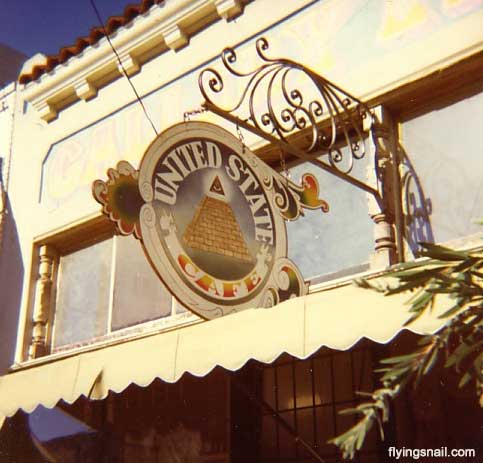


Remembering the United State Cafe
FTC Says AT&T Has Misled Millions of
Consumers with ‘Unlimited’ Data PromisesCompany “Throttles” Many Consumers Who Had Signed Up for Unlimited Data
October 28, 2014 ~ https://www.ftc.gov/news-events/press-releases/2014/10/ftc-says-att-has-misled-millions-consumers-unlimited-data
TAGS: deceptive/misleading conduct ~ Technology ~ Bureau of Consumer Protection ~ Western Region ~ Consumer Protection ~ Advertising and Marketing
The Federal Trade Commission filed a federal court complaint against AT&T Mobility, LLC, charging that the company has misled millions of its smartphone customers by charging them for “unlimited” data plans while reducing their data speeds, in some cases by nearly 90 percent.
The FTC’s complaint alleges that the company failed to adequately disclose to its customers on unlimited data plans that, if they reach a certain amount of data use in a given billing cycle, AT&T reduces – or “throttles” – their data speeds to the point that many common mobile phone applications – like web browsing, GPS navigation and watching streaming video – become difficult or nearly impossible to use.
“AT&T promised its customers ‘unlimited’ data, and in many instances, it has failed to deliver on that promise,” said FTC Chairwoman Edith Ramirez. “The issue here is simple: ‘unlimited’ means unlimited.”
According to the FTC’s complaint, AT&T’s marketing materials emphasized the “unlimited” amount of data that would be available to consumers who signed up for its unlimited plans. The complaint alleges that, even as unlimited plan consumers renewed their contracts, the company still failed to inform them of the throttling program. When customers canceled their contracts after being throttled, AT&T charged those customers early termination fees, which typically amount to hundreds of dollars.
The FTC alleges that AT&T, despite its unequivocal promises of unlimited data, began throttling data speeds in 2011 for its unlimited data plan customers after they used as little as 2 gigabytes of data in a billing period. According to the complaint, the throttling program has been severe, often resulting in speed reductions of 80 to 90 percent for affected users. Thus far, according to the FTC, AT&T has throttled at least 3.5 million unique customers a total of more than 25 million times.
According to the FTC’s complaint, consumers in AT&T focus groups strongly objected to the idea of a throttling program and felt “unlimited should mean unlimited.” AT&T documents also showed that the company received thousands of complaints about the slow data speeds under the throttling program. Some consumers quoted the definition of the word “unlimited,” while others called AT&T’s throttling program a “bait and switch.” Many consumers also complained about the effect the throttling program had on their ability to use GPS navigation, watch streaming videos, listen to streaming music and browse the web.
The complaint charges that AT&T violated the FTC Act by changing the terms of customers’ unlimited data plans while those customers were still under contract, and by failing to adequately disclose the nature of the throttling program to consumers who renewed their unlimited data plans.
FTC staff worked closely on this matter with the staff of the Federal Communications Commission.
The Commission vote authorizing the staff to file the complaint was 5-0. The complaint was filed in the U.S. District Court for the Northern District of California, San Francisco Division.
NOTE: The Commission files a complaint when it has “reason to believe” that the law has been or is being violated and it appears to the Commission that a proceeding is in the public interest. The case will be decided by the court.
The Federal Trade Commission works for consumers to prevent fraudulent, deceptive, and unfair business practices and to provide information to help spot, stop, and avoid them. To file a complaint in English or Spanish, visit the FTC’s online Complaint Assistant or call 1-877-FTC-HELP (1-877-382-4357). The FTC enters complaints into Consumer Sentinel, a secure, online database available to more than 2,000 civil and criminal law enforcement agencies in the U.S. and abroad. The FTC’s website provides free information on a variety of consumer topics. Like the FTC on Facebook (link is external), follow us on Twitter (link is external), and subscribe to press releases for the latest FTC news and resources.
Call It Stormy Monday, T-Bone Walker from Andy Minnes ~ https://vimeo.com/18048402
Paul Krassner ~ The Realist, Writer, Comic, Investigative Satirist
Remembering Dick Gregory
By Paul KrassnerI first met Dick Gregory when he asked me to interview him for The Realist in New York. I saw him again when I was in Chicago. He was performing at the Playboy Club and invited me to his show. Two years previously, Negro comedians performed only in Negro nightclubs, and Gregory was no exception.
But one evening the regular white comic at the Playboy Club got sick, and Gregory took his place. It made Time magazine, and he was invited to perform on the Tonight Show, but he declined unless, after doing his stand-up act, he would be asked to sit down and talk with Jack Paar. The gamble worked, and Gregory became an instant celebrity, breaking through the color barrier with humor.
Eventually we became friends and fellow demonstrators. Now he was performing at the Playboy Club, not as a substitute comic but as a star attraction. They had to supply me with a jacket, and a tie that was decorated all over with bunny symbols. Gregory was already on stage.
“How could Columbus discover America,” he was asking the audience, “when the Indians were already here?”
In his dressing room between shows, Gregory took out his wallet and showed me a tattered copy of his favorite poem, “If,” by Rudyard Kipling. I laughed and he looked offended, until I explained that I was laughing because it was also my favorite poem, and “the unforgiving minute” was my favorite poetic phrase.
Gregory visited me on the lower east side of New York. The entire side of one building on that block featured a fading advertisement for a cleanser personified by the Gold Dust Twins, a pair of little Negro boys. It had originally been painted right on the bricks.
When he saw it, he said, “They ought to take that whole wall and preserve it in a museum somewhere.”
* * *
On a work-vacation in the Florida Keys with Abbie and Anita Hoffman in December in 1967. I followed a neighborhood crow down the road, then continued walking to town by myself to use the telephone. First I called Gregory, since it was his city Chicago that we were planning to invade the presidential convention in the 1968 summer. He told me that he had decided to run for president, and he wanted to know if I thought Bob Dylan would make a good vice president.
“Oh, sure, but to tell you the truth, I don't think Dylan would ever get involved in electoral politics.”
Gregory would end up with assassination researcher Mark Lane as his running mate. Next, I called Jerry Rubin in New York to arrange for a meeting when we returned.
At our counter-convention we all attended an Unbirthday Party for President Lyndon Johnson at the Coliseum, with Ed Sanders, leader of the Fugs, serving as emcee. The atmosphere was highly emotional. Dick Gregory recited the Preamble to the Declaration of Independence with incredible fervor. Fists were being upraised in the audience as he spoke, and I thrust my own fist into the air for the first time.
* * *
When my marriage broke up in 1971 I moved to San Francisco and I had my own talk program. Gregory announced on my show that, until the war in Vietnam was over, he was going to stop eating solid foods. I in turn announced that, until the war was over, I was going to eat all of Dick Gregory's meals. Actually, my only real discipline was being silent one day a week.
When my young daughter Holly came out to stay with me that summer, she decided to join me on my silent day. We communicated with handwritten notes. Holly wrote, Does laughter count? Since we were making up the rules as we went along, I answered, Yes, but no tickling. Naturally she tried to make me laugh, but I held it in – and got a rush.
All the energy that normally gets dissipated into the air with laughter seemed to surge through my body instead. I decided to stop laughing altogether, just to see what would happen. The more I didn't laugh, the more I found funny. And, paying closer attention to others, I refined my appreciation of laughter as another whole language that could often be more revealing than words. Sometimes I would get a twinge of guilt if I nearly slipped and laughed, and I remembered what I had always known, that children must be taught to be serious. When I mentioned my laugh-fast to Dick Gregory, still on his food-fast, it didn't sound so far-fetched to him.
That's two things people do out of insecurity,” he said. “Eating and laughing.”
“Well, what would happen to us if everyone in our audiences realized that?”
“Brother, we'd go out of business.”
* * *
I was invited to a Christmas party in 1977 by Hustler publisher Larry Flynt. Gregory was at the party, and Flynt asked each of us to perform, but first he would take the microphone himself. To my surprise-shock that he wanted me to publish his magazine beside The Realist while he traveled around the country to spread his (temporary) born-again Chrisianity.
On Thanksgiving Day, Gregory had been arrested in front of the White House for protesting the lack of human rights in South Africa. Larry Flynt had a premonition that there would be an assassination attempt on Gregory. Flynt contacted him a couple of weeks later, and they became friends. Gregory was now staying at Flynt's mansion in Columbus, helping him change to a vegetarian diet. Flynt had already taken off forty pounds. On the day before the Christmas party, Gregory was in the middle of giving himself an enema when Flynt walked in.
According to Gregory, “Larry said, ‘Let me tell you about this fantastic guy I've got comin' out, and I don't know what I'm gonna do yet but I just wanna talk with him.’ And I said, ‘Well, who is it?’ He said, ‘Paul Krassner.’ And I just fell out, and said, ‘Are you serious? He's one of the hippest minds in the whole world.’ Then he came back and said, ‘How long you been knowin' him?’ and I told him, ‘All through the sixties,’ you know. And I said it was a fantastic idea.”
For the New Year Flynt flew Gregory and me to the Bahamas. Gregory was in the kitchen, diligently preparing a health drink for Flynt – this must have been the birth of his Bahamian Diet powder – and he was also feeding unfiltered conspiracy theories to his eager student.
At midnight, we all went out on the dock and stood in a misty drizzle as Gregory uttered truly eloquent prayers for each of us. When he finished, Flynt’s wife Althea whined, like Lucy in the Peanuts strip, “My hair's getting all wet.” It was her way of saying “Amen.”
On New Year's Day, we were sitting in the sand, just relaxing. Flynt had bought a paperback novel by Gore Vidal in the hotel store, but first he was reading the Sunday New York Times and worrying about the implications of juries with only six members. A moment later he was rubbing suntan lotion on my back.
“I'll bet Hugh Hefner never did this for you,” he said.
* * *
Larry Flynt had been traveling around a lot, but he happened to be back in L.A. at the same time that my friend LSD guru Ram Dass was visiting, so I had the unique pleasure of introducing them. Larry, Althea, Ram Dass and I went to a health-food restaurant, where we discovered that we shared something in common: we were all practicing celibacy – Larry at the suggestion of Dick Gregory, Althea by extension, Ram Dass for spiritual purposes, and me just for the sheer perversity of it.
When Larry got shot down south by a racist nut because Hustler had a black naked model, Althea had transformed the Coca-Cola Suite at Emory University Hospital into her office, where she was now studying the slides of the irreverent “Jesus and the Adulteress” feature. Dick Gregory was there, and he said, “This scares me.” He was concerned about reaction in the Bible Belt, notwithstanding the fact that Hustler's research department had already made certain that the text followed the Bible.
And now Althea was checking for any sexism that might have slipped past the male editors’ limited consciousness. The spread was already in page forms, but not yet collated into the magazine, and there was still a gnawing dilemma about whether or not to publish it.
The marketing people were aghast at the possibility that wholesalers would refuse to distribute an issue of the magazine with such a blatantly blasphemous feature. Althea and I voted to publish. Gregory and editor Bruce David voted not to publish. “I’m against it,” he said, “because we're this is an issue that just simply will not be distributed.”
Faced with this crucial decision, Althea made her choice on the basis of pure whimsicality. She noticed a pair of pigeons on the window ledge. One of them was waddling toward the other. “All right,” she said, “if that dove walks over and pecks the other dove, then we will publish this.” The pigeon continued strutting along the window ledge, but it stopped short and didn’t peck the other pigeon, so publication of “Jesus and the Adulteress” was postponed indefinitely.
Of course Dick Gregory continued to spread his diligent activism until he died. He was a loss to me, and to this country and around the world, but his powerful inspiration remains.
Hippies, radicals, pranksters: Jerry Rubin
has a bio and Paul Krassner has our review
Jerry Rubin (right) and Paul Krassner share a joint in the late '60s. (Fantagraphics Books, Inc.)by Paul Krassner, August 31, 2017 ~ Books/Los Angeles Times Source
Pat Thomas, the author of “Did iT! From Yippie to Yuppie: Jerry Rubin, an American Revolutionary,” had noticed that there were six books about co-activist Abbie Hoffman, but none about Jerry Rubin, so Thomas welcomed the challenge. Seventy-five co-conspirators were interviewed for revealing anecdotes galore (including me), and this tome is a unique oral and visual history heavy enough to sink into your coffee table.
Rubin had written a few books himself, though. The first was 1970’s “DO iT!” Under the influence of Ritalin, he recorded all the material swirling in his mind, and his girlfriend Nancy Kurshan transcribed 700 pages that had to be severely trimmed down. That book was heiress Patty Hearst’s favorite, radicalizing her, especially the part about rebelling against elite parents.
In January 1964, Rubin was 26 with a thick handlebar mustache, bored as a journalist for the Cincinnati Post. He moved to UC Berkeley for grad school, but dropped out during his first semester. He then asked so many questions about local politics, filling his notebook so much, that several activists thought he was a cop. But by May 1965, at the Berkeley campus he had organized a Vietnam teach-in, the largest in the U.S.
Jerry Rubin speaking at Harvard in 1969. (Spencer Grant / Getty Images)He called me in New York, inviting me to speak there. I urged him to also contact folksinger Phil Ochs, who could perform appropriate songs between speeches. Rubin had never heard of Ochs, but he accepted my suggestion. They would eventually become deep friends.
When Rubin was subpoenaed by the House Un-American Activities Committee, he wore a rented American Revolutionary costume, and he gave out copies of the Declaration of Independence. As the marshals carried him out, he yelled, “I want to testify!” He had manipulated the media to spread his patriotic message on radio, TV and the front pages of newspapers across the country.
Peace activist Dave Dellinger invited Rubin to be the project director of an anti-war event at the Pentagon in October 1967, where Ed Sanders of the Fugs would lead the ritual of levitating the building. Rubin moved to New York and met Hoffman. Mutual admiration developed quickly. Their brains were complementary. Hoffman was the right lobe (spontaneity) and Rubin the left (list-making).
They led a nonviolent group to Wall Street and threw a load of single dollars from the balcony onto the floor, where stockbrokers stopped everything and grabbed the cash. These political pranksters then explained to the waiting reporters the connections among money, poverty and war.
An idea of Rubin’s sidekick, Stew Albert, glued the straight New Left together with stoned hippies. That hybrid phenomenon was already in process at various protests. It would serve as a conception of the Yippies, the Youth International Party, which was born at the home of Hoffman and his wife, Anita, on the afternoon of Dec. 31, 1967. This informal alliance of activists celebrated with Colombian marijuana at our first meeting to plan a counter-convention to the Democratic National Convention scheduled for Chicago in August 1968. On the way to a New Year’s Eve party, I rubbed some fresh snow into Rubin's bushy hair. It was a Yippie baptismal rite.
Jerry Rubin (right) with Norman Mailer. (Fantagraphics Books, Inc.)In Chicago, a sense of competition was developing. Hoffman bought a pig for president, but then Rubin decided to purchase a bigger, meaner, uglier pig that was released at City Hall. Tom Hayden chastised Rubin: “Are you going to have a press conference and make very serious statements, or are you going to have a whole Yippie guerrilla theater performance?” Meanwhile, billy clubs and tear gas were being used indiscriminately and sadistically outside the convention hall. Later, a government-sponsored investigation concluded that it was “a police riot.”
Nevertheless, in 1969, a trial took place of the Chicago 8, including Black Panther Bobby Seale, whose crime was to deliver a speech. His lawyer was sick, but the judge wouldn’t allow him to defend himself. Seale shouted that he had such a right. Who could’ve guessed that in an American courtroom, a defendant’s mouth would be gagged and his body shackled to a chair? When the judge finally kicked him out of the trial, it became the Chicago 7, two of whom were Yippies. As if to prove it, Rubin and Hoffman entered the court one day wearing judicial robes.
John Lennon and Yoko with Jerry Rubin(far right) playing percussion onstage
at the Apollo Theater (Bob Gruen / Fantagraphics Books, Inc.)In biographer Thomas’ diligent research, he realized that the men got credit for the Yippies while the women weren’t acknowledged. Powerful spouses — Anita Hoffman and Judy Gumbo Albert — deserved recognition. So did several others. Judy Lampe designed the Yippie logo, using a style of Japanese lithography she had studied. Robin Morgan left the Yippies to organize a feminist rally against the Miss America Pageant in Atlantic City, N.J., in September 1968. The Yippies’ office was run by Kurshan, Rubin’s girlfriend, and Walli Leff, whose husband, Sam, served as the Yippies’ archivist. In 1970, Kurshan left Rubin because of his fame and egotism. Without her, his ability to be a leader temporarily disintegrated.
Likewise, John Lennon had gone through an awful breakup with the Beatles, fueled by disagreements with Paul McCartney. Lennon and his wife, Yoko Ono, moved to New York and met Rubin, who persuaded them to play at the John Sinclair Freedom Rally in Michigan. Sinclair was the leader of the White Panthers and the rock band the MC5, and the rally got him out of prison, where he’d served two years for a pot bust.
After the protests at the 1972 Republican National Convention in Miami, Rubin moved to San Francisco and dropped out of politics. He became a New Age junkie — meditation, the est movement, yoga, Rolfing, health food — happily recommending the virtues of self-awareness therapy. But later on, he confessed, “There’s not really much for me to do, and I’m pretty bored right now. The war is over.” Yes, the Yippie was gradually morphing into the Yuppie.
His love life had a certain pattern. On his first date with Stella Resnick, a therapist, he said: “I’m going to marry you.” She wanted to be independent, so they lived together until he was too controlling. Back in New York, his “I Want” laundry list included “I want a beautiful blond society wife.” Mimi Leonard fit that description enough that before they had left for dinner, he’d asked her to marry him. She wasn't that interested, but five weeks later they moved in together and married the next year.
They also developed a creative partnership. Their first collaboration was “The Event: 14½ Hours That Could Change Your Life,” but they both also needed to get jobs. She became a commodities broker at ContiCommodity, a top firm. He appreciated her success and decided to go to Wall Street. He finally was titled marketing director at the John Muir Co. Many people thought Rubin had sold out, not knowing that his job was “investigating new companies of the future, including those producing solar and other alternative-energy sources.” He created a weekly networking salon, a precursor to Facebook and LinkedIn.
Ad for "The Event" (Fantagraphics Books, Inc)In high school, Rubin wore a bow tie. Nobody else did. But in countercultural days, he claimed that a necktie was a hangman’s noose. However, now that he was dancing in the world of finance, he wore a necktie, sort of like having worn the appropriate revolutionary costume for HUAC. He stated, “Money is the long hair of the ’80s.”
He actually sent out a press release requesting that the media no longer refer to him as a former Yippie leader. I couldn’t resist publishing in the Realist magazine this headline: “Former Yippie Leader Asks Not to Be Called Former Yippie Leader.” Indeed, Rubin and Hoffman went on tour with a debate, “The Yippies Versus the Yuppies.” At a San Francisco nightclub, I moderated their performance and mentioned, “If Abbie Hoffman were to throw money in the Stock Exchange today, this time, Jerry Rubin would invest it.”
Jerry Rubin, center, at his business networking salon at Studio 54.
(Sonia Katchian / Fantagraphics Books, Inc.)In “Did iT!,”the biographer captures Rubin’s story with fairness — affirmative and negative perceptions are both presented through the subjectivity of 75 prisms. Dellinger regretted inviting Rubin to organize the Pentagon event. Mimi and Jerry had two children, and she divorced him, yet they remained best friends and partners.
Hoffman and Ochs both committed suicide, and Rubin might as well have: On a November evening in 1994, he was jaywalking across Wilshire Boulevard when he got hit by a car as he turned around to wave at his girlfriend, Tiffany Stettner, and a friend, Fred Branfman. They’d just had a meeting to discuss his organization about helping disenfranchised black children in Los Angeles, providing all kinds of creative ways for them to be educated. He died two weeks later.
When Rubin was alive and anyone criticized him, Hoffman defended him: “You can say that you lay across the train tracks leading to the Oakland Depot where the soldiers were being sent overseas to die in Vietnam.” Hoffman wasn’t aware that Jack Kurzweil, Berkeley professor and activist, said to Rubin, “One of the young kids who was so bound up in the passion and ecstasy of it that he was going to lie down on the tracks. Jesus, we’ve got to drag the kid off the tracks.” Rubin responded, “Oh no, let him stay there. If he dies, it will be great publicity.”
Was that a literal nuance or just a taste of his sardonic humor? In 1994, Rubin (who’d paid $85,000 personal income tax the year before) met another Jerry Rubin (a peace activist who lived in Venice, made $6 an hour potting orchids and had $2 in the bank). Yippie-Yuppie said, “Gee, people think it’s me who’s broke. That’s not good. I’m running a business, and I can’t have that perspective.” So he made an offer: “Hey, I’ll give you $10,000 if you change your name to anything — and $20,000 if you change it to Tom Hayden.”
Paul Krassner is the editor of “The Realist Cartoons” collection and the author of “Confessions of a Raving, Unconfined Nut: Misadventures in the Counterculture.”
“Did iT! From Yippie to Yuppie: Jerry Rubin, an American Revolutionary”
Pat Thomas ~ Fantagraphics Books: 272 pp., $49.99
Notes from ~@~
In Case You're Following this...
FRB 121102: Detection at 4 - 8 GHz band
with Breakthrough Listen backend at Green Bankhttp://www.astronomerstelegram.org/?read=10675
On Saturday, August 26 at 13:51:44 UTC we initiated observations of the well-known repeating fast radio burst FRB 121102 [Spitler et al., Nature, 531, 7593 202-205, 2016] using the Breakthrough Listen Digital Backend with the C-band receiver at the Green Bank Telescope. We recorded baseband voltage data across 5.4375 GHz of bandwidth, completely covering the C-band receiver’s nominal 4-8 GHz band [MacMahon et al. arXiv:1707.06024v2]. Observations were conducted over ten 30-minute scans, as detailed in Table 1. Immediately after observations, the baseband data were reduced to form high time resolution (300 us integration) Stokes-I products using a GPU-accelerated spectroscopy suite. These reduced products were searched for dispersed pulses consistent with the known dispersion measure of FRB 121102 (557 pc cm^-3); baseband voltage data were preserved. We detected 15 bursts above our detection threshold of 10 sigma in the first two 30-minute scans, denoted 11A-L and 12A-B in Table 2. In Table 2, we include the detection signal-to-noise ratio (SNR) of each burst, along with a very rough estimate of pulse energy density assuming a 12 Jy system equivalent flux density, 300 us pulse width, and uniform 3800 MHz bandwidth. We note the following phenomenological properties of the detected bursts: 1. Bursts show marked changes in spectral extent, with characteristic spectral structure in the 100 MHz - 1 GHz range. 2. Several bursts appear to peak in brightness at frequencies above 6 GHz. ~ Click to Continue Reading
Boptime with Even Steven + Legends of Wilmington Jazz
On Saturday’s Boptime we begin at 6am (EDT) with the original cast recording of the Broadway musical The King and I from this day in 1952, rounding out the hour with selections from George Shearing, Don Byas, Machito, and Benny Bennett. At 7am (EDT) we continue with music from this day in 1952, the #1 tunes, what was playing in local movie houses, and other current events. After The Morrie Sims Show at 8am (EDT) it’s Delaware Rock & Roll Hall of Fame with music from local bands during the late 1970s. At 9am (EDT) we kick off the Club Baby Grand with a selection of recordings from Clifford Brown in 1953, then fill out the hour with recordings from current Wilmington jazz trumpeters Gerald Chavis and Tony Smith. ~ Steve
Boptime: Saturday, 6 AM Eastern, 3 AM Pacific
Go To: http://www.wvud.org/?page_id=24
Click on a listening link below the WVUD logo:
Keep the Net Neutral
from McKenna FrymanWHAT COUNTS AS REAL? —
AT&T absurdly claims that most “legitimate” net neutrality comments favor repeal
AT&T ignores finding that 98.5% of unique comments favor net neutrality rules.
JON BRODKIN ~ 8/30/2017, 2:40 PM ~ Ars Technica Source
Telecom Crimes
Violation of the Fourth Amendment to the Constitution
Violation of the First Amendment to the Constitution
Unlawful electronic surveillance or disclosure or use of information obtained by electronic surveillance in violation of 50 U.S.C. §1809.
Unlawful interception, use or disclosure of Class communications in violation of 18 U.S.C. § 2511
Unlawful solicitation and obtained disclosure of the contents of communications in violation of 18 U.S.C. § 2702(a)(1) or (a)(2)
Unlawful solicitation and obtained disclosure of non-content records or other information in violation of 18 U.S.C. § 2702(a)(3)
Violation of the Administrative Procedures Act
Violation of the constitutional principle of separation of powers
PUNISHMENT PROVIDED BY POLITICIANS:
Telecom Punishment for Illegal Spying on U.S. Citizens
posted by Dahbud
via Chartis:
AT&T is the top job-cutter
among the tax-dodging firmsThe telecommunications giant managed to get away with an effective tax rate of just 8.1 percent over the 2008-2015 period, while cutting more jobs than any other firm in our sample. After accounting for acquisitions and spinoffs, the firm had nearly 80,000 fewer employees in 2016 than in 2008. Instead of job-preserving investments, the firm shoveled profits into stock buybacks ($34 billion over the past nine years) and CEO pay. AT&T chief Randall Stephenson pulled in $28.4 million in 2016, more than double his 2008 payout.
http://www.ips-dc.org/wp-content/uploads/2017/08/EE17-final-embargoed-for-August-30.pdf
Despite a study showing that 98.5 percent of individually written net neutrality comments support the US's current net neutrality rules, AT&T is claiming that the vast majority of "legitimate" comments favor repealing the rules.
The Federal Communication Commission's net neutrality docket is a real mess, with nearly 22 million comments, mostly from form letters and many from spam bots using identities stolen from data breaches. AT&T is part of an industry group called Broadband for America that just funded a study that tries to find trends within the chaos.
As we wrote earlier today, that study (conducted by consulting firm Emprata) found fewer than 1.6 million filings appear to have "originated from individuals that took the time to type a personalized comment." Of those, 1.52 million were against FCC Chairman Ajit Pai's plan to repeal the current Title II net neutrality rules, while just 23,000 were in favor of repeal.
Let's contrast that finding with what AT&T Executive VP Joan Marsh wrote in a blog post today:
"While Title II proponents may claim that millions of consumers representing the large majority of commenters support Title II, in fact, most of these comments were not legitimate. And when only legitimate comments are considered, the large majority of commenters oppose Title II regulation of Internet access."
In related comments filed with the FCC today, AT&T accused Title II proponents of "stuff[ing] the... ballot box with millions upon millions of sham 'comments.'"
AT&T analysis doesn’t account for spam bots
Marsh's blog post does not refer directly to the Emprata study. Instead, it links to a Multichannel News article that describes Broadband for America's interpretation of the study. The broadband industry lobby group argues that 69.9 percent of legitimate comments support repealing the rules.
After linking to that article, Marsh writes that most comments on the FCC docket "appear to us to be fraudulent. Millions of comments were generated using phony e-mail addresses. Millions of others were generated using duplicative e-mail or physical addresses. And still others originated overseas. Consider this: nearly 450,000 comments were filed using Russian addresses, all but four in support of Title II regulation of Internet services."
That all appears to be true, but that doesn't prove that the majority of legitimate comments oppose the current Title II net neutrality rules.
Marsh reasonably excludes millions of comments that appear to be have been submitted with fake contact information, such as e-mails with artificial domains or that were submitted multiple times using the same contact information. But the docket is also filled with spam comments falsely attributed to people whose names and addresses were taken from data breaches. These comments would appear to come from real people despite being fraudulent, yet AT&T did not mention this problem.
Most comments on the docket are based on form letters, i.e. blocks of text pre-written by advocacy groups and ostensibly submitted by real people who agree with the sentiment.
Form letter comments are often legitimate expressions of support or opposition to the current rules, but many of them were also submitted by spam bots, not the actual people whose names are attached to the comments. One anti-net neutrality form letter comment whose spread was attributed at least partly to a bot has appeared on the docket more than 800,000 times under various names, for example.
People who say their names and addresses were attached to anti-net neutrality comments without their permission asked the FCC to remove fraudulent comments from the docket, but the FCC has not done so. Given that these comments were submitted under real people's names and addresses, they would apparently count as "legitimate" opposition to net neutrality rules in AT&T's analysis. The Emprata study examined fake e-mail addresses and duplicate addresses, but did not mention the problem of identities from data breaches being used to fake opposition to net neutrality rules.
Conclusions depend on your definition of “real”
Today is the final day of the public comment period on the FCC proposal to eliminate the Title II common carrier classification of broadband providers and repeal or replace the net neutrality rules against blocking, throttling, and paid prioritization.
The anti-Title II crowd relied on form letters more heavily than the pro-Title II crowd; 99.6 percent of anti-Title II comments came from form letters while 89.8 percent of pro-Title II comments were based on form letters, according to Emprata.
AT&T led a form-letter campaign itself; the company claimed to be in favor of net neutrality rules while trying to convince its customers to support repealing the current rules.
A tally of all 21.8 million comments evaluated in the Emprata study, regardless of their origin, found that 60 percent supported keeping the current rules and 39 percent supported repealing them. Emprata noted that the results shift in the other direction (61 percent against the current rules) if you exclude comments with fake e-mail addresses.
But the exclusion of fake e-mail addresses doesn't guarantee that all of the remaining comments are legitimate. That's because of the spam bot problem we just described.
Emprata notes that "it is very difficult to draw any definitive conclusions from the comments found in the docket. Any conclusions that one might draw from the data would be based on the subset of data that [one] considered to be 'real.'"
Net neutrality advocacy group Fight for the Future argues that the most "real" comments are the ones written by individuals. Fight for the Future has led form letter submission campaigns itself, but recognizes that it takes more effort to write one's own comment.
"The most telling statistic in the report is that the unique comments in the docket—the ones that people took the extra time to write themselves—are overwhelmingly in favor of Title II net neutrality protections, by more than 73 to 1," the group said.
JON BRODKIN
Jon is Ars Technica's senior IT reporter, covering the FCC and broadband, telecommunications, wireless technology, and more.
EMAIL jon.brodkin@arstechnica.com // TWITTER @JBrodkin
The Backchannel is the Message
Posted on May 18, 2017 by samuelthefifth ~ Status 451 Source
There’s a pernicious problem in rule making: it is much easier to introduce a rule than to remove it. To borrow a phrase from Pascal, “if I had had more time, I would have written a shorter rulebook,” and this applies just the same whether those rules are meant for computers or for people. The fewer parts there are, the less they can interact in surprising ways.
If we lose sight of this in our rule making, we invite the same kinds of pathology we see more readily with technology. We suffer exploits due to unforeseen consequences, and we are prevented from fixing them due to an ever growing maintenance overhead. Rather than try to untangle the resulting monolith of interactions, often the only compassionate action is to take it out back and put it out of its misery. If too many people are invested, though, this rarely happens, and we simply truck on.
Furthermore, what is left out can be as important as what is said. Rules are only as useful as the environment in which they are enforced. If that environment is one with hidden layers and unseen levers, the result may be quite the opposite of what is written.
Where am I going with this?
Over at the farm of ribbons, Sonya Mann has written a very interesting piece about community governance. She posits a dichotomy between two approaches, the content-oriented and the process-oriented. Or, more simply, ends versus means. It applies to the kulturkampf, of course:
“It’s okay when we do it, because our ends are just.” vs “I will defend their right to say it, even if I strongly disagree.”
Those focused on content seek to achieve satisfaction in the result, desiring correctness of values. Those focused on process seek to achieve consistency in the methodology, desiring fair application of rules.
As a model, it’s lovely, and it can help to bridge the often insurmountable gap between two camps. If you are unable to model why someone does something, you are left to ascribe to idiocy or malice what is, to them, actually a principled stance. Accusations of bad faith naturally result, as do the 140 glyph bursts of thinly veiled vitriol and quick dismissal.
The only issue I have with this model is that it flies in the face of reality on the ground. I’m a fan of the process side of things, but the problem I have with the social justice contingent isn’t that they don’t do enough rule making. Quite the opposite.
For most of the last decade, we’ve been pushed to adopt Codes of Conduct. Notably in Ada Initiative’s anti-harassment policy, and now the Github-approved Contributor Covenant, what we find is a long list of prohibited behaviors and processes for enforcement. This is scoped to exceed any individual project and extends into the public sphere.
Reading the language, it sure looks like they didn’t want to leave any stone unturned:
“Harassment includes offensive verbal comments related to gender, sexual orientation, disability, physical appearance, body size, race, religion, or other protected class status, sexual images in public spaces, deliberate intimidation, stalking, following, harassing photography or recording, sustained disruption of talks or other events, inappropriate physical contact, and unwelcome sexual attention.” (Ada)
“Project maintainers have the right and responsibility to remove, edit, or reject comments, commits, code, wiki edits, issues, and other contributions that are not aligned to this Code of Conduct, or to ban temporarily or permanently any contributor for other behaviors that they deem inappropriate, threatening, offensive, or harmful.” (Covenant)
This is not the work of someone who values content over process. No, this is rule making supreme. Indeed, this is the result of long discussions and threads, arguing over the exact wording. The people who introduce and adopt this sort of language clearly think the precise rules matter. This picture really starts to crack in two distinct ways.
One is that there’s always a final rule, an “etcetera” catch-all clause. It will, for example, prohibit “other conduct which could reasonably be considered inappropriate.” This by itself should be odd: why bikeshed over a long list of detailed sins, if it turns out they’re just illustrations after all?
The other is that these rules are put in place through decidedly soft power: contributors and speakers have explicitly promised to boycott those who do not adopt them. Arguing for a markedly different approach altogether is treated as defection. This is the surest sign that the real rules are not the ones on paper at all.
If you look back at particular incidents of modern witch hunting, there’s a pretty consistent theme: it’s okay to break the rules to catch a witch. Despite a rulebook that says you must use “welcoming and inclusive language,” insults easily fly left and right towards the targets, as do the calls for violence, ironic or not. Being “respectful of differing viewpoints and experiences” doesn’t apply to viewpoints or experiences that are toodifferent. “Showing empathy towards others” has a very limited action radius, as certain notoriously noxious individuals have demonstrated.
It gets even worse, as seen in the most recent case in the Drupal community. Not only were the rules broken to dig up dirt on a dastardly unperson, but the target was actually found not to be in violation of the rules at all. Not even by applying catch-all clauses. Did the aggressors put down their torches and pitchforks in shame, did the committee “show empathy towards [its] community members?” Nope.
What happened instead is extremely illustrative. The Community Working Group rejected its own verdict based on its own rules, and escalated the issue to the backchannel. This led to a long and drawn-out PR exercise by the powers that be. The community was left to guess and argue over the resulting secret meetings and edited statements, while the accused in question felt his only recourse was to blog openly and at length about his private life.
The flaw in the model, as I see it, is that the content side doesn’t just think “it’s okay when we do it.” It would be easier to swallow if that were the going premise, openly admitted. No, it’s that they insist up-and-down that rules are absolutely necessary for everyone. That diversity officers and arbitration committees must be established, with official seals of approval (and handsome paychecks to boot). The net result is that the language of compassion and tolerance can be seamlessly used to paper over destructive and vindictive personal agendas.
None of this is in the rulebook, but it doesn’t have to be. The rulebook is the foot in the door, used to legitimize everything else. It is undoubtedly well intentioned, but it is wide open to abuse, and the 0-day exploits have been in the wild for years. Good intentions are worth nothing when bad actions consistently result.
In the resulting discussions, there’s a particular flip that occurs, too. These problems are denied, at first, up until a plaintiff demonstrates a solid enough case. Then, without skipping a beat, we are told nothing is perfect, and that the alternative would be far worse. The rationale that the ends justify the means only comes into play when pressed. The argument has actually changed completely, but the emotional valence is the same: we’re right, we’re the good guys, and you’re bad for not following along. Cognitive dissonance averted. The resulting radioactive fall-out is fine by them, as long as it’s aimed in the general vicinity of the right group of wrong people.
I don’t think the choice to backchannel and deploy PR tactics is an isolated one, either. It’s hard to miss that as public discourse has gotten more polarized, more and more social interaction online has moved into private or semi-private venues. Products like Slack and Discord have ridden this trend to great success. While it’s true the old realms of Usenet and IRC were equally fragmented, what those networks had that the new ones lack is the simple ease of discoverability.
In the search for more welcoming and inclusive environments, it has become standard policy to adopt a process of soft vetting and gatekeeping through obscurity. This in itself is a noteworthy trend, as it’s normally a hallmark of totalitarian societies, where real intellectual freedom only happens behind closed doors. It’s not necessarily a bad thing to be selective, but it does fly in the face of oft-repeated intentions. One might also wonder about the supposed safety of said closed venues, when they’re fully controlled by a handful of tech companies with an increasingly restrictive political monoculture.
It doesn’t take a genius to notice this and worry that you might be next. When faced with an unpatched exploit, people will adapt their behavior to mitigate the danger regardless. Worse, in the eyes of the justice seekers, this is a good thing, for their ends are being achieved—in this, the model is spot on. But to do so, they are not abandoning process, no, they are adding ever more rules, embedded into the very social fabric of their communities. We can expect goalposts to be moved towards legislating values rather than conduct, as the conditions that set off the witch detector will have to be necessarily broadened. The cure for the dysfunction that results is ever only more of the poison. This too is an unwritten rule.
It does, however, bring us closer to the heart of the matter: certain ideas themselves have become sacred, which was already observed years ago in comics:
No amount of actual discussion can take place as long as the critics view the very act of counterargument as morally indefensible because of the class or gender of the defenders, or the language used. Only one side is accusing the other of being scum, only one side is insisting that the other side should just shut up and stop speaking their mind. And it’s not Team Dickwolves.
Maybe the real dickwolves were wearing sheep’s clothing all along.
It’s supremely naive to take people at their word, especially when their words are law, and their actions say the exact opposite.
It's become more and more clear that what's happening
is motivated by a Hegelian/Marxian ideology of
thesis-antithesis power strugglevia franksvalli ~ Reddit Source
Here and elsewhere, it's become more and more clear that what's happening is motivated by a Hegelian/Marxian ideology of thesis-antithesis power struggle.
One of the interesting results of this is that while a Code of Conduct regulates the speech and behavior of a community explicitly, behind that there is an implicit assumption of the power and worth of statements based upon which group the speaker belongs to: the thesis or the antithesis, that is, the dominant ideology or the secondary ideology.
A clear result of this, as we see illustrated here, is that an action or statement out of the mouth of speaker A is notweighed equally with the action or statement out of the mouth of speaker B. This is why statements that are flipped to be equal and opposite are actually thought of to CoC enforcers as wildly different magnitudes of offense. What becomes acceptable and unacceptable according to the Code of Conduct becomes not so much what the actor says or how they act, but what group they belong to.
For instance, if a member of the secondary ideology acts completely outrageously, they are treated with kid gloves because they are from the secondary/submissive ideology. It's assumed that they are historically repressed - and that they haven't been able to have their say, so we should give them a pass, no matter how outrageous their conduct is.
Conversely, if a member of the dominant ideology acts even the least bit against the grain or even the least bit politically incorrect, the hammer comes down on them. Through no choice of their own, they have been born into the dominant ideology and should tread as lightly as possible, so as to give others a chance. The very smallest transgressions are seen as attempts to stifle the secondary ideology.
If you want to think of it kind of mathematically, you can think of it as a multiplying factor.
"How great is the offense of speaker A?". Because they're a member of the dominant ideology, the offense is the weight of the action/statement itself multiplied by 10.
"How great is the offense of speaker B?". Because they're a member of the secondary/submissive ideology, the offense is the weight of the action/statement itself multiplied by 0.1
Today's Secret Question Is:What is Dialectic?
Dialectic or dialectics (Greek: διαλεκτική, dialektikḗ), also known as the dialectical method, is a discourse between two or more people holding different points of view about a subject but wishing to establish the truth through reasoned arguments and is not synonymous with the term debate.
Dialectics (also called logic) was one of the three liberal arts taught in medieval universities as part of the trivium. The trivium also included rhetoric and grammar.
Dialectic was formed as follows:
1). The Question to be determined
2). The principal objections to the question
3). An argument in favor of the Question, traditionally a single argument ("On the contrary...")
4). The determination of the Question after weighing the evidence. ("I answer that...")
5). The replies to each objection
Hegelian dialectic
Hegelian dialectic, usually presented in a threefold manner, was stated by Heinrich Moritz Chalybäus as comprising three dialectical stages of development: a thesis, giving rise to its reaction, an antithesis, which contradicts or negates the thesis, and the tension between the two being resolved by means of a synthesis. In more simplistic terms, one can consider it thus; problem->reaction->solution. Although this model is often named after Hegel, he himself never used that specific formulation. Hegel ascribed that terminology to Kant.Carrying on Kant's work, Fichte greatly elaborated on the synthesis model, and popularized it.
On the other hand, Hegel did use a three-valued logical model that is very similar to the antithesis model, but Hegel's most usual terms were: Abstract-Negative-Concrete. Hegel used this writing model as a backbone to accompany his points in many of his works.
The formula, thesis-antithesis-synthesis, does not explain why the thesis requires an antithesis. However, the formula, abstract-negative-concrete, suggests a flaw, or perhaps an incompleteness, in any initial thesis—it is too abstract and lacks the negative of trial, error, and experience. For Hegel, the concrete, the synthesis, the absolute, must always pass through the phase of the negative, in the journey to completion, that is, mediation. This is the essence of what is popularly called Hegelian Dialectics.
According to the German philosopher Walter Kaufmann:
"Fichte introduced into German philosophy the three-step of thesis, antithesis, and synthesis, using these three terms. Schelling took up this terminology. Hegel did not. He never once used these three terms together to designate three stages in an argument or account in any of his books. And they do not help us understand his Phenomenology, his Logic, or his philosophy of history; they impede any open-minded comprehension of what he does by forcing it into a scheme which was available to him and which he deliberately spurned [...] The mechanical formalism [...] Hegel derides expressly and at some length in the preface to the Phenomenology.
Kaufmann also cites Hegel's criticism of the triad model commonly misattributed to him, adding that "the only place where Hegel uses the three terms together occurs in his lectures on the history of philosophy, on the last page but one of the section on Kant—where Hegel roundly reproaches Kant for having 'everywhere posited thesis, antithesis, synthesis'".
To describe the activity of overcoming the negative, Hegel also often used the term Aufhebung, variously translated into English as "sublation" or "overcoming," to conceive of the working of the dialectic. Roughly, the term indicates preserving the useful portion of an idea, thing, society, etc., while moving beyond its limitations. (Jacques Derrida's preferred French translation of the term was relever.)
In the Logic, for instance, Hegel describes a dialectic of existence: first, existence must be posited as pure Being (Sein); but pure Being, upon examination, is found to be indistinguishable from Nothing (Nichts). When it is realized that what is coming into being is, at the same time, also returning to nothing (in life, for example, one's living is also a dying), both Being and Nothing are united as Becoming.
As in the Socratic dialectic, Hegel claimed to proceed by making implicit contradictions explicit: each stage of the process is the product of contradictions inherent or implicit in the preceding stage. For Hegel, the whole of history is one tremendous dialectic, major stages of which chart a progression from self-alienation as slavery to self-unification and realization as the rational constitutional state of free and equal citizens. The Hegelian dialectic cannot be mechanically applied for any chosen thesis. Critics argue that the selection of any antithesis, other than the logical negation of the thesis, is subjective. Then, if the logical negation is used as the antithesis, there is no rigorous way to derive a synthesis. In practice, when an antithesis is selected to suit the user's subjective purpose, the resulting "contradictions" are rhetorical, not logical, and the resulting synthesis is not rigorously defensible against a multitude of other possible syntheses. The problem with the Fichtean "thesis–antithesis–synthesis" model is that it implies that contradictions or negations come from outside of things. Hegel's point is that they are inherent in and internal to things. This conception of dialectics derives ultimately from Heraclitus.
Hegel stated that the purpose of dialectics is "to study things in their own being and movement and thus to demonstrate the finitude of the partial categories of understanding."
One important dialectical principle for Hegel is the transition from quantity to quality, which he terms the Measure. The measure is the qualitative quantum, the quantum is the existence of quantity.
"The identity between quantity and quality, which is found in Measure, is at first only implicit, and not yet explicitly realised. In other words, these two categories, which unite in Measure, each claim an independent authority. On the one hand, the quantitative features of existence may be altered, without affecting its quality. On the other hand, this increase and diminution, immaterial though it be, has its limit, by exceeding which the quality suffers change. [...] But if the quantity present in measure exceeds a certain limit, the quality corresponding to it is also put in abeyance. This however is not a negation of quality altogether, but only of this definite quality, the place of which is at once occupied by another. This process of measure, which appears alternately as a mere change in quantity, and then as a sudden revulsion of quantity into quality, may be envisaged under the figure of a nodal (knotted) line".
As an example, Hegel mentions the states of aggregation of water: "Thus the temperature of water is, in the first place, a point of no consequence in respect of its liquidity: still with the increase or diminution of the temperature of the liquid water, there comes a point where this state of cohesion suffers a qualitative change, and the water is converted into steam or ice". As other examples Hegel mentions the reaching of a point where a single additional grain makes a heap of wheat; or where the bald tail is produced, if we continue plucking out single hairs.
Another important principle for Hegel is the negation of the negation, which he also terms Aufhebung (sublation): Something is only what it is in its relation to another, but by the negation of the negation this something incorporates the other into itself. The dialectical movement involves two moments that negate each other, something and its other. As a result of the negation of the negation, "something becomes its other; this other is itself something; therefore it likewise becomes an other, and so on ad infinitum". Something in its passage into other only joins with itself, it is self-related. In becoming there are two moments: coming-to-be and ceasing-to-be: by sublation, i.e., negation of the negation, being passes over into nothing, it ceases to be, but something new shows up, is coming to be. What is sublated (aufgehoben) on the one hand ceases to be and is put to an end, but on the other hand it is preserved and maintained. In dialectics, a totality transforms itself; it is self-related, then self-forgetful, relieving the original tension.
Marxist dialectic
Karl Marx and Friedrich Engels proposed that G.F. Hegel had rendered philosophy too abstractly ideal:
The mystification which dialectic suffers in Hegel's hands, by no means prevents him from being the first to present its general form of working in a comprehensive and conscious manner. With him it is standing on its head. It must be turned right side up again, if you would discover the rational kernel within the mystical shell.
In contradiction to Hegelian idealism, Karl Marx presented dialectical materialism (Marxist dialectic):
My dialectic method is not only different from the Hegelian, but is its direct opposite. To Hegel, the life-process of the human brain, i.e. the process of thinking, which, under the name of 'the Idea', he even transforms into an independent subject, is the demiurgos of the real world, and the real world is only the external, phenomenal form of 'the Idea'. With me, on the contrary, the ideal is nothing else than the material world reflected by the human mind, and translated into forms of thought.
In Marxism, the dialectical method of historical study became intertwined with historical materialism, the school of thought exemplified by the works of Marx, Engels, and Vladimir Lenin. In the USSR, under Joseph Stalin, Marxist dialectics became "diamat" (short for dialectical materialism), a theory emphasizing the primacy of the material way of life; social "praxis" over all forms of social consciousness; and the secondary, dependent character of the "ideal". The term "dialectical materialism" was coined by the 19th-century social theorist Joseph Dietzgen who used the theory to explain the nature of socialism and social development. The original populariser of Marxism in Russia, Georgi Plekhanov used the terms "dialectical materialism" and "historical materialism" interchangeably. For Lenin, the primary feature of Marx's "dialectical materialism" (Lenin's term) was its application of materialist philosophy to history and social sciences. Lenin's main input in the philosophy of dialectical materialism was his theory of reflection, which presented human consciousness as a dynamic reflection of the objective material world that fully shapes its contents and structure. Later, Stalin's works on the subject established a rigid and formalistic division of Marxist–Leninist theory in the dialectical materialism and historical materialism parts. While the first was supposed to be the key method and theory of the philosophy of nature, the second was the Soviet version of the philosophy of history.
A dialectical method was fundamental to Marxist politics, e.g., the works of Karl Korsch, Georg Lukács and certain members of the Frankfurt School. Soviet academics, notably Evald Ilyenkov and Zaid Orudzhev, continued pursuing unorthodox philosophic study of Marxist dialectics; likewise in the West, notably the philosopher Bertell Ollman at New York University.
Friedrich Engels proposed that Nature is dialectical, thus, in Anti-Dühring he said that the negation of negation is:
A very simple process, which is taking place everywhere and every day, which any child can understand as soon as it is stripped of the veil of mystery in which it was enveloped by the old idealist philosophy.
In Dialectics of Nature, Engels said:
Probably the same gentlemen who up to now have decried the transformation of quantity into quality as mysticism and incomprehensible transcendentalism will now declare that it is indeed something quite self-evident, trivial, and commonplace, which they have long employed, and so they have been taught nothing new. But to have formulated for the first time in its universally valid form a general law of development of Nature, society, and thought, will always remain an act of historic importance.
Marxist dialectics is exemplified in Das Kapital (Capital), which outlines two central theories: (i) surplus value and (ii) the materialist conception of history; Marx explains dialectical materialism:
In its rational form, it is a scandal and abomination to bourgeoisdom and its doctrinaire professors, because it includes in its comprehension an affirmative recognition of the existing state of things, at the same time, also, the recognition of the negation of that state, of its inevitable breaking up; because it regards every historically developed social form as in fluid movement, and therefore takes into account its transient nature not less than its momentary existence; because it lets nothing impose upon it, and is in its essence critical and revolutionary.
Class struggle is the central contradiction to be resolved by Marxist dialectics, because of its central role in the social and political lives of a society. Nonetheless, Marx and Marxists developed the concept of class struggle to comprehend the dialectical contradictions between mental and manual labor, and between town and country. Hence, philosophic contradiction is central to the development of dialectics – the progress from quantity to quality, the acceleration of gradual social change; the negation of the initial development of the status quo; the negation of that negation; and the high-level recurrence of features of the original status quo. In the USSR, Progress Publishers issued anthologies of dialectical materialism by Lenin, wherein he also quotes Marx and Engels:
As the most comprehensive and profound doctrine of development, and the richest in content, Hegelian dialectics was considered by Marx and Engels the greatest achievement of classical German philosophy.... "The great basic thought", Engels writes, "that the world is not to be comprehended as a complex of ready-made things, but as a complex of processes, in which the things, apparently stable no less than their mind images in our heads, the concepts, go through an uninterrupted change of coming into being and passing away... this great fundamental thought has, especially since the time of Hegel, so thoroughly permeated ordinary consciousness that, in its generality, it is now scarcely ever contradicted.
But, to acknowledge this fundamental thought in words, and to apply it in reality in detail to each domain of investigation, are two different things.... For dialectical philosophy nothing is final, absolute, sacred. It reveals the transitory character of everything and in everything; nothing can endure before it, except the uninterrupted process of becoming and of passing away, of endless ascendancy from the lower to the higher. And dialectical philosophy, itself, is nothing more than the mere reflection of this process in the thinking brain." Thus, according to Marx, dialectics is "the science of the general laws of motion both of the external world and of human thought".
Lenin describes his dialectical understanding of the concept of development:
A development that repeats, as it were, stages that have already been passed, but repeats them in a different way, on a higher basis ("the negation of the negation"), a development, so to speak, that proceeds in spirals, not in a straight line; a development by leaps, catastrophes, and revolutions; "breaks in continuity"; the transformation of quantity into quality; inner impulses towards development, imparted by the contradiction and conflict of the various forces and tendencies acting on a given body, or within a given phenomenon, or within a given society; the interdependence and the closest and indissoluble connection between all aspects of any phenomenon (history constantly revealing ever new aspects), a connection that provides a uniform, and universal process of motion, one that follows definite laws – these are some of the features of dialectics as a doctrine of development that is richer than the conventional one.
With that Said, Maybe It's Time To
Read This _or_ Listen to this ?
Notes from ~@~
Carlin Step, DJ Steve Porter & Eli Wilkie from Roland Kardeby
The Great Bell Chant (The End of Suffering) from R Smittenaar
One Day, Matisyahu from 100%
Unsung Hero from Rattakarn Srithavatchai "Garn"
Belote's Studio 354 ~ Artist's Gallery & Bay Area Showcase, Oakland, CA
Mike Wilhelm ~ Charlatans, Flamin' Groovies, Loose Gravel, and more
The San Francisco Rock Band
That Was Too Wild For the SixtiesBy Ben Marks ~ July 19th, 2017
Article Source ~ Photographs, Posters, etc. at Source
Charlatans, 1966 in front of former Barbary Coast hot spot:
Hippodrome, Pacific St., San Francisco. [Photo provided by Mike Wilhelm]George Hunter of the Charlatans never shot Jerry Garcia of the Grateful Dead, not even once. But in the spring of 1966, on the grounds of Rancho Olompali just north of San Francisco, Garcia had reason to believe Hunter was gunning for him, causing the great guitarist to royally freak out. The misunderstanding unfolded when Hunter decided to drop some LSD and bring a loaded .30-30 Winchester rifle to a party at the Dead’s new Marin County hangout. Hunter never intended to strike fear into the heart of his genial host, but when he did, he was so high that he began to panic—perhaps he had accidentally shot someone, if not Garcia, after all. It took a long bummer of a night, and three of Hunter’s closest friends, to shake that demon thought from his troubled mind.
You’ve probably never heard of the “Incident at Olompali,” as no one has called it since, and your awareness of the Charlatans is likely limited to seeing the band’s name on scores of vintage rock posters, alongside more familiar monikers such as Jefferson Airplane, Quicksilver Messenger Service, Big Brother and the Holding Company, and Grateful Dead.
That’s too bad, because in their heyday, from 1965 to 1968, the Charlatans were a lot of people’s favorite band, thanks to a danceable mix of distinctively American musical genres—from the blues and rock to Western swing and jazz. Around the time of the Charlatans’ first paying gig, in June of 1965, the Grateful Dead were still playing pizza parlors as the Warlocks, Jefferson Airplane had yet to take off, Big Brother was a year away from handing Janis Joplin a microphone, and Quicksilver was not even a gleam in anyone’s eye. By 1966, the Charlatans had a record deal with the same label that had released the 1965 smash hit “Do You Believe In Magic?” by the Lovin’ Spoonful.
Given their head start as performers, the Charlatans should have been one of the biggest music acts of the 1960s. They were doing acid tests before anyone even called them that, and were the first band to promote itself with a poster and perform while bathed in the glow of a light show. Just as importantly, the Charlatans were trailblazers at a moment in musical history when rock bands were being rewarded for conforming to the new psychedelic orthodoxy. In particular, the band’s embrace of Americana was years ahead of the Byrds, Grateful Dead, and Eagles, who also wove threads pillaged from those genres into their repertoires. That’s not to give the Charlatans credit for “Sweetheart of the Rodeo” and “Workingman’s Dead”—or blame for “Desperado”—but they got to the Americana party first.
All of this should have worked in their favor, but by the Summer of Love in 1967, the band was self-destructing, and by the time Jimi Hendrix was playing the last notes of “Hey Joe” at Woodstock in the summer of 1969, the Charlatans were history. What happened? == [Click to Continue Reading]
Visit Mike Wilhelm's page at: http://mike-wilhelm.com
Also by Ben Marks:
Did the CIA's Experiments With Psychedelic Drugs
Unwittingly Create the Grateful Dead?
Mike Wilhelm & C. SpanglerGreat MP3 Podcasts via Mike Wilhelm
Hear The People ~ http://www.flyingsnail.com/Podcast/HearThePeople.mp3
Sympathy For The Devil ~ http://www.flyingsnail.com/Podcast/SympathyForTheDevil.mp3
When You Got A Good Friend ~ http://www.flyingsnail.com/Podcast/WhenYouGotAGoodFriend.mp3
Louie, Louie ~ Mike Wilhelm & Hired Guns from ed chatham
Notes from ~@~
On the Bus, Carolyn Mountain Girl Garcia from vimeo
Freedom of expression and freedom of speech aren't really important unless they're heard...It's hard for me to stay silent when I keep hearing that peace is only attainable through war. And there's nothing more scary than watching ignorance in action. So I dedicated this Emmy to all the people who feel compelled to speak out and not afraid to speak to power and won't shut up and refuse to be silenced. ~ Tom Smothers
Cree Prophecy
Only after the last tree has been cut down,
Only after the last river has been poisoned,
Only after the last fish has been caught,
Only then will you find money cannot be eaten.
Develop Your Mind, Not Sacred Sites
In an 1868 treaty, drafted at Fort Laramie in Sioux country, the United States established the Black Hills as part of the Great Sioux Reservation, set aside for exclusive use by the Sioux people. However, after the discovery of gold there in 1874, the United States confiscated the land in 1877. To this day, ownership of the Black Hills remains the subject of a legal dispute between the U.S. government and the Sioux.
Dakota by Elizabeth Jackson from OWU Media Center via Dr. Mary Howard

Where Have All the Flowers Gone?
Sacred Clowns
The Heyókȟa symbolize and portray many aspects of the sacred, the Wakȟáŋ. Their satire presents important questions by fooling around. They ask difficult questions, and say things others are too afraid to say. By reading between the lines, the audience is able to think about things not usually thought about, or to look at things in a different way.
Principally, the Heyókȟa functions both as a mirror and a teacher, using extreme behaviors to mirror others, thereby forcing them to examine their own doubts, fears, hatreds, and weaknesses. Heyókȟas also have the power to heal emotional pain; such power comes from the experience of shame--they sing of shameful events in their lives, beg for food, and live as clowns. They provoke laughter in distressing situations of despair and provoke fear and chaos when people feel complacent and overly secure, to keep them from taking themselves too seriously or believing they are more powerful than they are.
In addition, sacred clowns serve an important role in shaping tribal codes. Heyókȟa's don't seem to care about taboos, rules, regulations, social norms, or boundaries. Paradoxically, however, it is by violating these norms and taboos that they help to define the accepted boundaries, rules, and societal guidelines for ethical and moral behavior. This is because they are the only ones who can ask "Why?" about sensitive topics and employ satire to question the specialists and carriers of sacred knowledge or those in positions of power and authority. In doing so, they demonstrate concretely the theories of balance and imbalance. Their role is to penetrate deception, turn over rocks, and create a deeper awareness. From Word Worlds, Where simplifying complexity becomes art.
Nobody for President ~ NONE of the ABOVE should be a choice on voter ballots
Curtis Spangler & Wavy Gravy, Nobody for President Rally, 197610.12 ~ Photo: James Stark
American Dream, George Carlin from Ishtar [Not Work Safe] Audio Alternative from FellyNobody should have that much power
Oh, I hope that I see you again I never even caught your name As you looked through my window pane ~ So I'm writing this message today I'm thinking that you'll have a way Of hearing the notes in my tune ~ Where are you going? Where have you been? I can imagine other worlds you have seen ~ Beautiful faces and music so serene ~ So I do hope I see you again My universal citizen You went as quickly as you came ~ You know the power Your love is right You have good reason To stay out of sight ~~ But break our illusions and help us Be the light ~ Message by Mike Pinder
Why I Think This World Should End, Brandon Sloan
Without love in the dream, it will never come true. ~ Jerry Garcia/Robert Hunter
And in the end, the love you take is equal to the love you make. ~ John Lennon
The man whispered, "God, speak to me" and a meadowlark sang. But the man did not hear. So the man yelled "God, speak to me" and the thunder rolled across the sky. But the man did not listen. The man looked around and said, "God let me see you" and a star shined brightly. But the man did not notice. And the man shouted, "God show me a miracle" and a life was born. But the man did not know. So the man cried out in despair, "Touch me God, and let me know you are there" Whereupon God reached down and touched the man, But the man brushed the butterfly away and walked on.
Don't miss out on a blessing because
it isn't packaged the way you expect!
DuckDuckGo ~ The search engine that doesn't track you





